Research Spotlight
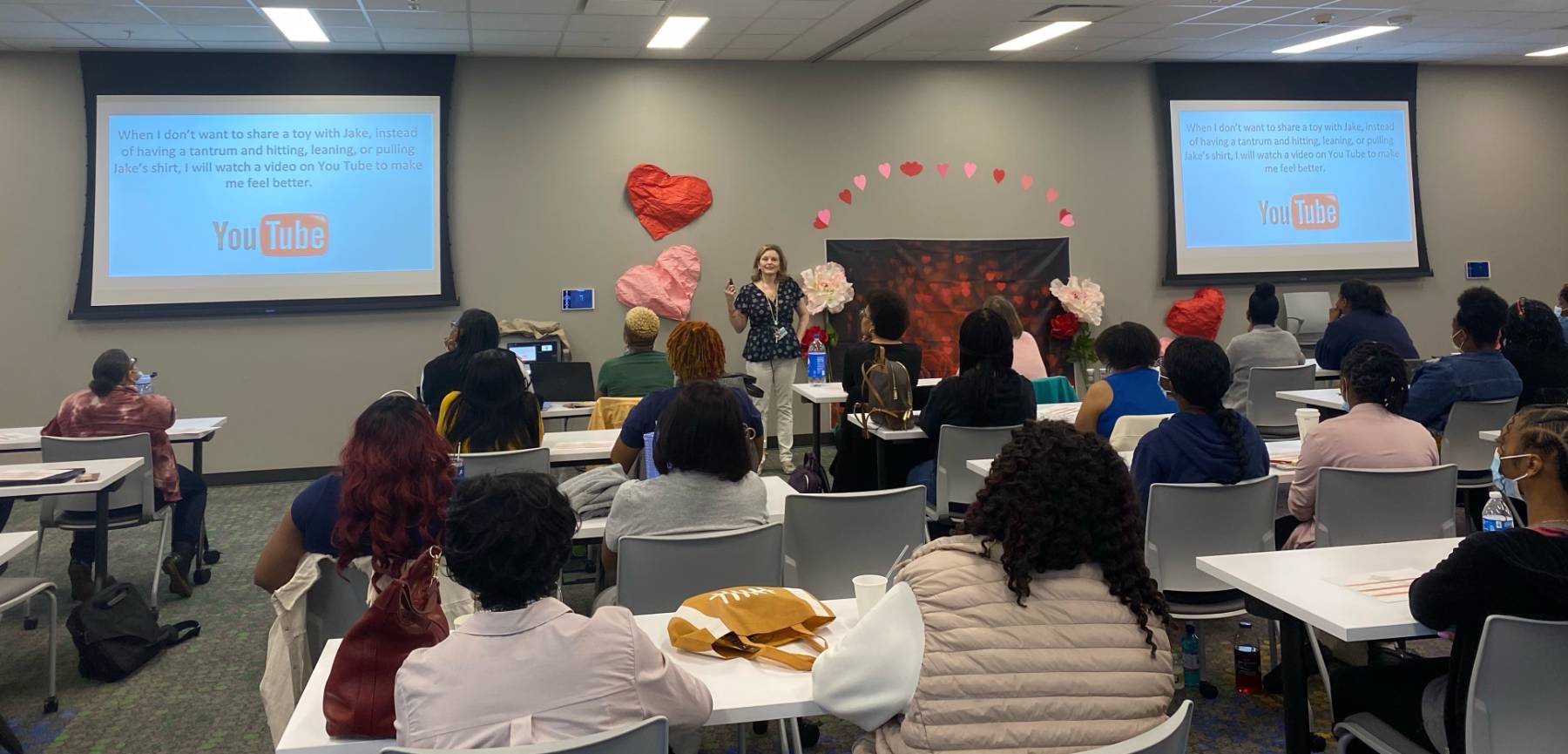
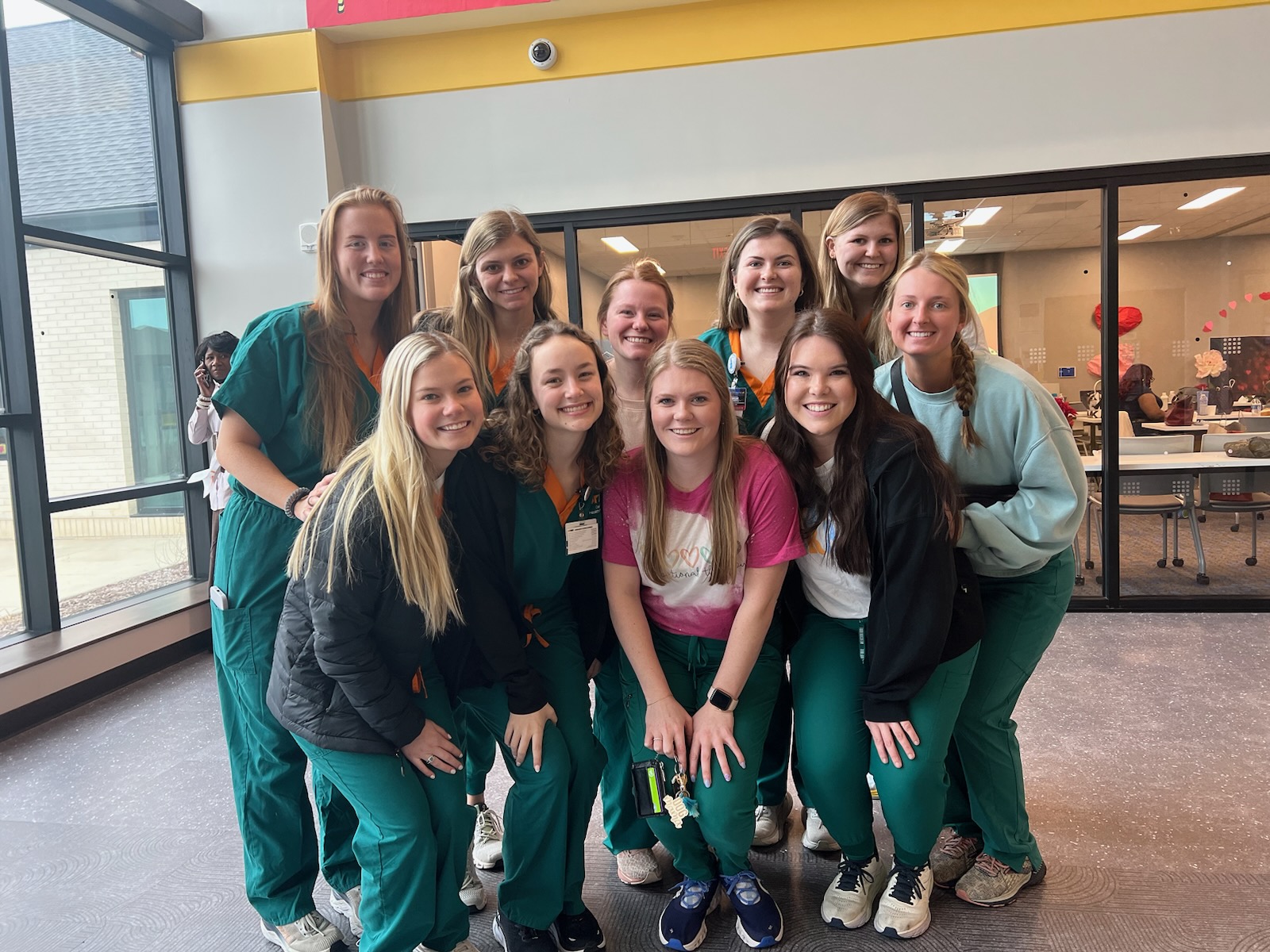
College of Health Professions Research Spotlight: Advancing Pediatric Occupational Therapy at UTHSC
The University of Tennessee Health Science Center’s (UTHSC) College of Health Professions is proud to highlight the achievements of our occupational therapy students and faculty through the impactful work of the Rachel Kay Stevens Therapy Center (RKSTC) and Project SPARK. These initiatives exemplify our commitment to fostering excellence in future healthcare leaders while advancing research and service in pediatric occupational therapy.
Rachel Kay Stevens Therapy Center: A Student-Driven Mission
The Rachel Kay Stevens Therapy Center (RKSTC) is a student-run, pro bono occupational therapy (OT) clinic dedicated to serving uninsured and underinsured children and families in the Mid-South region. Established in 2016, the center honors the legacy of Rachel Kay Stevens, a passionate OT student whose vision for making a difference continues to inspire. The clinic is managed by a board of UTHSC Master of Occupational Therapy (MOT) students under the guidance of faculty advisor Dr. Anne Zachry.
At RKSTC, MOT students gain invaluable hands-on experience through supervised clinical practice. Under the mentorship of licensed OT practitioners, students participate in developmental screenings, occupational therapy evaluations and interventions, and patient and family education. Services are provided both in person and via telehealth, ensuring accessibility for all families in need. Beyond clinical practice, the center serves as a hub for faculty-led research aimed at enhancing pediatric occupational therapy services.
Project SPARK: Empowering Preschoolers for Kindergarten Readiness
One of RKSTC’s flagship initiatives, Project SPARK ((S)upporting (P)reschoolers to (A)chieve (R)eadiness for (K)indergarten), is funded by the Urban Child Institute and is a testament to the center’s commitment to community outreach and evidence-based practice. Led by Dr. Zachry and Dr. Lauren Woods, with support from MOT students, Project SPARK is designed to:
- Provide developmental screenings and OT interventions to children with identified delays and their families.
- Educate parents on child development, family routines, daily reading, and interactive conversations through kindergarten readiness workshops.
- Equip preschool teachers with evidence-based strategies to support children’s development
and preparedness for kindergarten.
The impact of Project SPARK extends beyond the clinic, as its findings contribute to the broader field of pediatric OT. Notably, research stemming from the project was published in the Journal of Occupational Therapy, Schools, & Early Intervention in 2019, reinforcing the initiative’s significance in advancing best practices in school readiness interventions.
Expanding Research and Impact
Dr. Zachry emphasizes the ongoing efforts to expand research at RKSTC, aiming to strengthen the evidence base for pediatric occupational therapy interventions. “By broadening our research efforts, we aim to enhance best practices, improve outcomes, and contribute valuable data to the field of pediatric occupational therapy. Through continued services and outreach, we remain committed to making a meaningful, lasting impact on the children and families we serve.”
UTHSC’s College of Health Professions remains dedicated to equipping the next generation of occupational therapists with the skills, knowledge, and research experience necessary to drive innovation and excellence in healthcare. The achievements of our students and faculty at RKSTC and through Project SPARK exemplify our unwavering commitment to shaping the future of pediatric occupational therapy.
Reference: Zachry, A. H., Woods, L., & Jones, T. (2019). Parental Perceptions of Competence Related to School Preparation for Their Children after Participation in a Brief Kindergarten Readiness Workshop. Journal of Occupational Therapy, Schools, & Early Intervention. https://doi.org/10.1080/19411243.2019.1700474
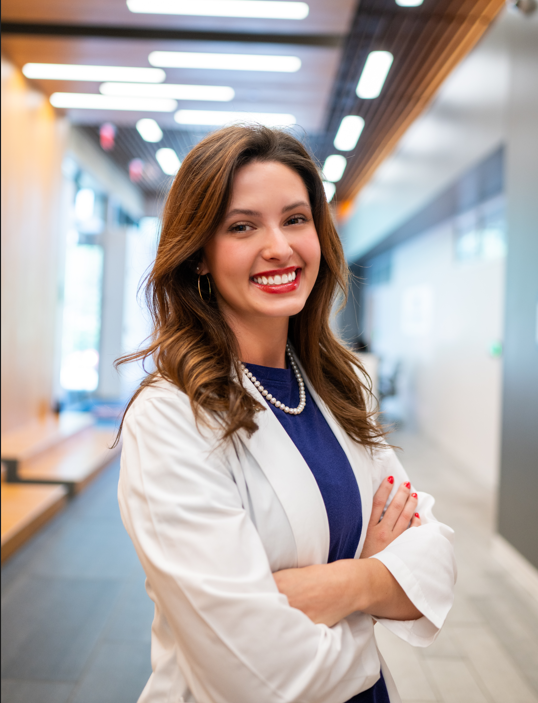
Haley Rodgers
Student Physical Therapist
College of Health Professions, Department of Physical Therapy
The University of Tennessee Health Science Center
Haley Rodgers is a second-year Physical Therapy student whose journey into the field was deeply influenced by her early life experiences. As a child, Haley helped care for her grandmother during her battle with cancer, an experience that instilled in her the values of compassion and resilience and sparked her desire to dedicate her life to helping others.
Throughout her childhood, Haley was an active individual and a competitive athlete. However, in high school, she shifted her focus to academics and student government, stepping away from sports. Over time, she recognized the importance of balancing her personal well-being with her professional aspirations. This realization reignited her interest in physical health and led her to explore human movement and rehabilitation. With guidance from her brother, a personal trainer, and witnessing the positive impact of exercise on her mother’s joint pain and arthritis, Haley began strength training.
This journey not only improved her own physical health but also inspired her passion for helping others achieve their health goals. These experiences motivated her to pursue a degree in kinesiology and a career in physical therapy, combining her love for science, movement, and empowering others.
Can you describe a project or assignment that has been particularly impactful or memorable for you?
It's difficult to choose just one because I’ve had so many rewarding experiences. However, the most memorable ones are the projects where I combined my personal experiences with my academic knowledge, especially those where I worked on rehabilitation strategies for patients. These assignments helped me see the real-world impact of kinesiology and physical therapy, and the ability to design tailored plans for recovery truly resonated with me.
Have you had any hands-on clinical experiences? If so, how has your study of kinesiology enhanced your ability to provide patient care?
I completed my first clinical rotation this past summer. My study of kinesiology has greatly enhanced my ability to care for patients. Understanding body anatomy and physiology, the ability to differentiate between and diagnose conditions, and having the empathy to connect with patients are all critical skills. Patients often come to us in vulnerable states, dealing with pain and fear. As a physical therapist, it's our responsibility to guide them through recovery, using our knowledge to help them regain mobility and reach their personal goals.
Have you considered pursuing research in kinesiology or physical therapy? If so, what topics or questions interest you most?
I am interested in contributing to research in kinesiology and physical therapy. Once I’ve gained practical experience in the field, I am particularly interested in working with the American Physical Therapy Association (APTA). After I have completed a few years of practice, I hope to identify areas where I can contribute to advancing the field, potentially focusing on treatment innovations or improving patient care protocols.
What role do you see kinesiology playing in advancing treatments or interventions in physical therapy?
Kinesiology plays a vital role in advancing treatments in physical therapy, as understanding human movement is essential for developing effective interventions. By studying the body’s ability to move, we can identify the best approaches to treat various conditions and pathologies. Advances in kinesiology can lead to more affordable treatments that promote independence, reduce comorbidities, and ultimately decrease the need for frequent hospital or doctor visits.
Looking ahead, how do you plan to integrate your kinesiology knowledge into your future career as a physical therapist?
I plan to specialize in sports medicine because of my passion for functional movement and promoting physical activity. I also aim to specialize in pelvic floor therapy, an underserved area of physical therapy. I believe I can offer comfort and support to patients, especially those dealing with sensitive conditions such as pregnancy, high level athletics, aging, etc. By combining these specialties, I hope to provide comprehensive care to a diverse range of patients.
What advice would you give to incoming students about excelling in kinesiology coursework?
My best advice is to practice what you preach! Moving your body is essential for both physical health and mental well-being, so take care of yourself, especially during stressful periods. There's a lot to learn about the human body, so be prepared to dedicate yourself to your studies. Additionally, always stay curious and ask questions. The key to excelling in kinesiology is applying your knowledge in real-world scenarios, whether that’s adapting exercises for individual patients or learning from your mentors and teachers. Hands-on experience is invaluable, so make sure to take full advantage of clinical and observational opportunities.
What are some of your hobbies or interests outside of school?
Outside of school, I enjoy working out, spending time with my dogs, and playing guitar. These activities help me maintain a healthy balance and recharge, which is essential for staying focused on my studies and future career.
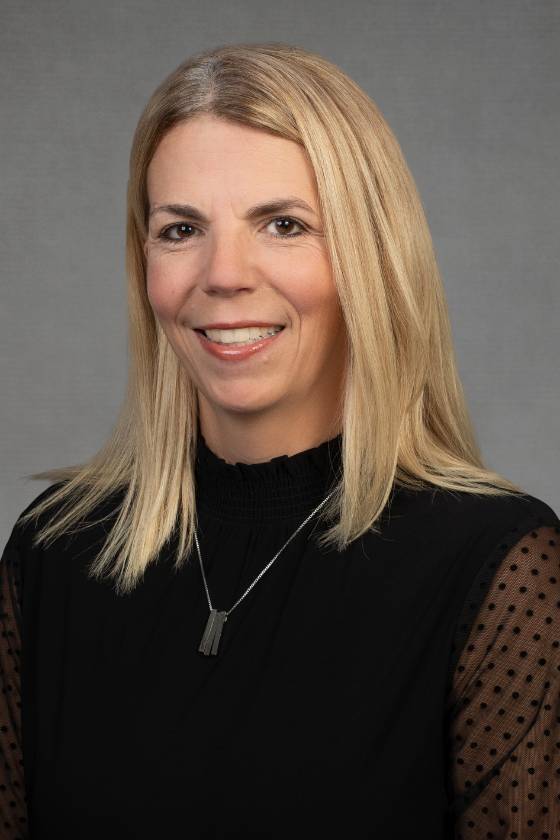
Ashley Harkrider, PhD
Professor and Department Chair for Audiology and Speech Pathology
Dr. Ashley Harkrider, professor and chair of UT Health Science Center’s Department of Audiology and Speech Pathology in Knoxville is leading an initiative to bring audiology, speech-language pathology, and social work services to underserved communities. With the support of a recent UT Grand Challenge Grant, she and her team are positioned to make a meaningful impact on healthcare access for rural Tennesseans.
Could you share details about the “Mobile Interprofessional Tandem Service (MITS) Model to Enhance Audiology and Speech Pathology Care and Outcomes in Rural East Tennessee”? What motivated your team to focus on the unique needs of rural communities in East Tennessee, and how do you plan to implement this project?
Many rural Tennesseans lack access to essential audiology and speech-language pathology (SLP) services due to a shortage of professionals, resulting in undiagnosed and untreated impairments. Families, schools, and aging centers are burdened with the responsibility and often lack the infrastructure to meet these healthcare needs. Patients seeking treatment at urban centers may often need to travel long distances, missing work or school and face challenges navigating the healthcare system. Patients and families often leave feeling overwhelmed with concerns about the financial burden required for ongoing care, resulting in poor adherence to follow-up treatments. In response, UTHSC’s Audiology and Speech Pathology (ASP) department and UTK’s College of Social Work (SW) are partnering to improve rural healthcare access in Tennessee through a Mobile Interprofessional Tandem Service (MITS) model. This mobile clinic, staffed by ASP faculty, audiology and SLP student clinicians, and social work students, will bring comprehensive care directly to rural communities. Equipped to diagnose and treat hearing, language, and speech disorders, the clinic will travel several days per week to reduce the need for patients to travel long distances and provide them with multidisciplinary healthcare services and continuity of care in their own communities.
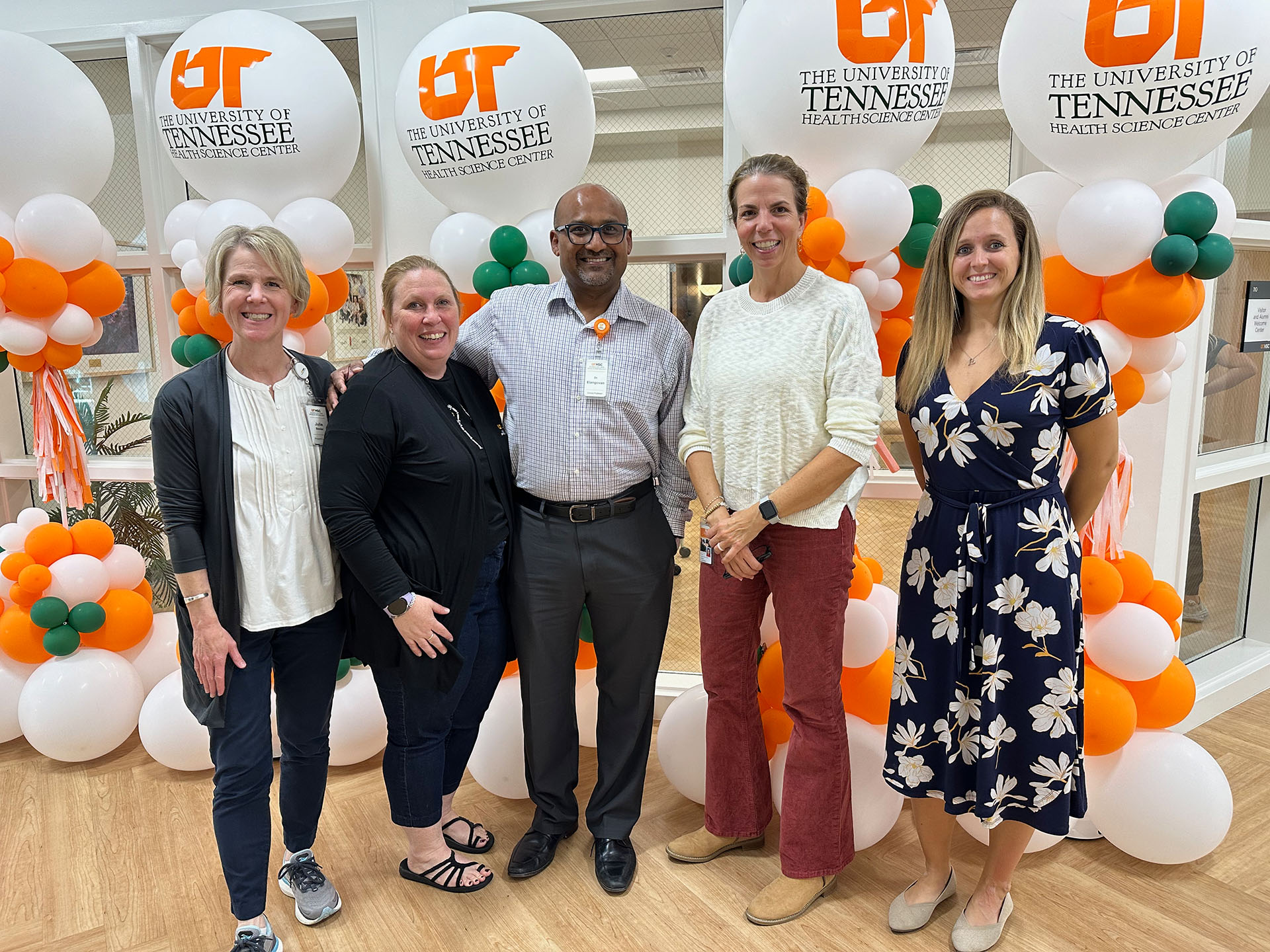
What key outcomes are you hoping to achieve in terms of patient care and accessibility?
The MITS model will remove healthcare barriers for rural Tennesseans by bringing specialized, multidisciplinary care and resources directly to their communities. Social Work (SW) will help assess community needs and optimize mobile services, enhancing health outcomes for local partners. Additionally, K-12 students, seniors, and families will benefit from increased health literacy and exposure to healthcare careers. UTHSC and UTK student clinicians will gain valuable insights into rural health challenges and social determinants, recognizing the impact of accessible healthcare and the efficiency of collaborative, interprofessional care in reducing health disparities and improving overall health outcomes.
How does this research align with broader trends in healthcare for underserved communities?
The MITS model addresses the widespread issue of underserved individuals by bringing comprehensive, multidisciplinary care directly to rural communities. In alignment with trends toward expanding remote healthcare, MITS will offer in-person services on-site and use telehealth between visits to maintain continuity of care for rural patients.
What potential do you see for mobile healthcare models in other areas of audiology, speech pathology, or even other healthcare fields?
External partners, including county schools, senior centers, and long-term care facilities across East, Central, and West Tennessee, have expressed strong demand for the MITS model, highlighting a significant need in these rural areas. The potential for expansion is substantial.
Are there plans to expand this model beyond rural East Tennessee once it’s implemented?
Faculty and students from UTHSC ASP and UTK SW will collect and analyze data from the MITS project to support future grant applications aimed at expanding services and reducing healthcare inequities in underserved Tennessee communities. The MITS model is a step toward establishing a Center of Excellence for Interprofessional Practice and Education, incorporating disciplines like social work, occupational therapy, and physical therapy. This collaborative model will improve patient care, address community needs, and provide UTHSC and UTK students with diverse, multidisciplinary educational experiences.
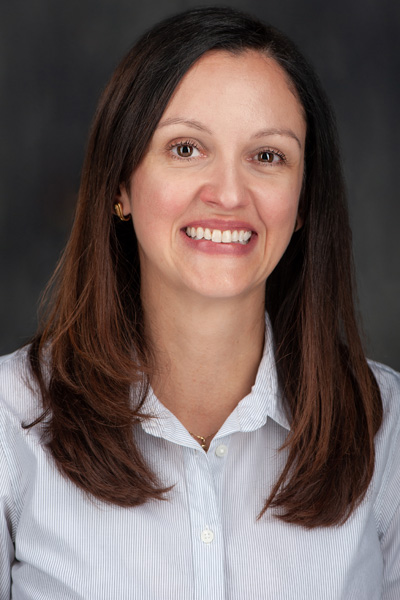
Bruna S. Mussoi, AuD, PhD
Associate Professor
College of Health Professions, Department of Audiology and Speech Pathology
Dr. Bruna Mussoi is the featured spotlight for this month's College of Health Professions Research. She joined the University in August 2024 as Associate Professor in the College of Health Professions, Department of Audiology and Speech Pathology. She earned her undergraduate degree in Audiology and Speech Pathology in Brazil, followed by a Master of Arts in Audiology from the University of Iowa, where she was among the last to complete the program before the transition to the Doctor of Audiology degree. After returning to Brazil, Dr. Mussoi worked as a clinical audiologist for three years before moving back to the United States to pursue a lifelong goal of obtaining a Ph.D. and earning her Doctor of Audiology degree. Earning a clinical certification to practice in the United States. Her combined clinical and research experiences have deeply influenced her current work and contributions to the field.
What inspired you to pursue a career in Audiology?
I have always enjoyed interacting with and helping people. In high school, I gravitated towards health professions, and after seeing a Speech Pathologist myself, I decided to pursue a degree in Speech Pathology and Audiology. Like many Audiology students, I found that the more I learned about Audiology through my undergraduate coursework and clinical experiences, the more I realized it was a better fit for me. After getting a taste of research during my Master’s degree, I returned to Brazil to work as an audiologist. During this time, I developed a passion for working with older adults, particularly because I found it fascinating that they often struggle to understand speech in noisy environments, even without significant hearing loss. While I enjoyed working in the clinic and interacting with patients, I constantly found myself asking research questions. In 2009, I was thrilled to return to the University of Iowa to pursue my Ph.D. During my graduate studies, I began teaching and discovered that I enjoy working with students just as much as I do with patients.
What has been the most rewarding aspect of your career thus far, and what challenges have you faced along the way?
I find both teaching and research incredibly rewarding. I truly enjoy mentoring and working with students, both in the classroom and the lab. Investigating research questions that have the potential to impact clinical practice is equally fulfilling. I feel fortunate to have the opportunity to shape the next generation of clinicians and researchers while also contributing to the growing body of scientific knowledge in Audiology. Although there are always small challenges in both teaching and research, I believe the biggest challenge is successfully balancing the various responsibilities that come with academia.
Could you give us a brief overview of your current research project on "Auditory neuroplasticity following experience with cochlear implants"?
Cochlear implants significantly enhance access to sounds and improve quality of life, though the degree of benefit varies among individuals. The most substantial improvements in speech understanding typically occur within the first six months post-implantation. These gains are widely believed to result from neural changes in the auditory system. While there is strong evidence supporting these neural changes in children following cochlear implantation, evidence in adults with bilateral hearing loss remains limited. This study aims to investigate how neural responses evolve with cochlear implant use, compared to long-term hearing aid use. Participants, including those who are candidates for cochlear implants (whether they choose implantation or continue with hearing aids), will be assessed at multiple points, from pre-implantation through six months post-implantation. The findings will enhance our understanding of how cochlear implant use affects cortical auditory neural responses in older adults and how these changes relate to speech understanding abilities.
What motivated you to focus on auditory neuroplasticity and its relation to cochlear implants?
This topic has intrigued me for quite some time. Cochlear implants are an incredible technology that can significantly benefit individuals with severe hearing loss, who no longer gain much from hearing aids. However, after being processed by cochlear implants, sounds like speech and music become highly degraded. Despite this, it is remarkable that adults, including older adults, can not only adapt to the altered sounds but also improve their ability to understand speech. I found it intuitive that neuroplastic changes must be supporting these improvements in speech perception following cochlear implantation. To my surprise, there is limited evidence of such neuroplasticity in older adults with bilateral hearing loss, even though they make up a large portion of cochlear implant recipients. Additionally, recent studies suggest that those who wear their cochlear implants for more hours each day experience greater benefits. This has led me to focus on investigating auditory neuroplastic changes, both in relation to time post-implantation and device usage, and how these changes contribute to speech perception outcomes.
How do you see your research contributing to advancements and real-world implications in cochlear implant technology or therapy for individuals with hearing impairments?
This line of research will have a direct impact on clinical practice by enabling us to objectively measure the individual benefits of cochlear implant use and providing valuable insights for counseling cochlear implant users. Additionally, with the growing population of older adults and a public health focus on expanding access to cochlear implants, I anticipate that findings from this research will support advocacy efforts aimed at increasing cochlear implant availability for older adults.
What do you like to do outside of school (i.e., personal hobbies or interests)?
I enjoy spending quality time with my family. We love exploring new places and trying out different restaurants. Traveling is also a passion of ours, as it gives us the opportunity to meet new people and experience different cultures.
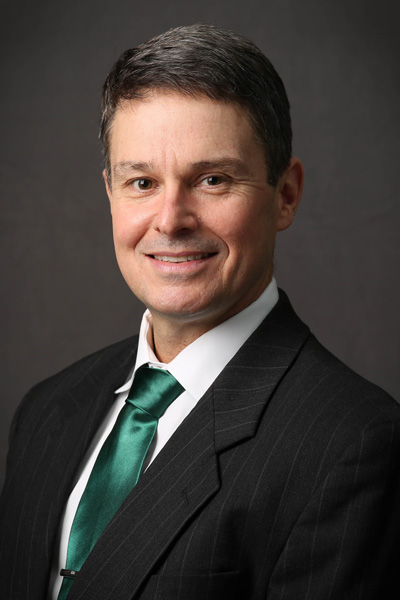
Barry Dale, PhD, PT, DPT, MBA, OCS, SCS, ATC, CSCS
Professor, Chair, and Program Director of Physical Therapy
College of Health Professions, Department of Physical Therapy
Dr. Barry Dale is in the spotlight this month at the College of Health Professions! He joined us back in July 2021 and now serves as the Professor and Chair of the Department of Physical Therapy. Dr. Dale has quite an impressive background—he earned his BSPT and MBA from South Alabama, his MAE from UAB, his PhD from the University of Alabama, and later, his DPT from the University of Tennessee at Chattanooga. With a deep passion for biomechanics and exercise physiology,
Dr. Dale's research is all about applying these fields to Orthopaedic and Sport rehabilitation. He's been a Physical Therapist for 30 years and has spent 22 of those years as a dedicated faculty member.
What are some highlights or significant milestones from your career in physical therapy?
Some of the highlights from my physical therapy career include being honored with the "Outstanding Teaching/Advising Award" from the University of Tennessee at Chattanooga and the "Excellence in Teaching Award" from the University of South Alabama.
Can you give us an overview of your current research project on neural networks and what you want others to know about this research?
Here's a quick rundown of my current research on neural networks and what I want to share about it: I'm working on a machine learning technique inspired by the way the human brain is structured and functions. It involves layers of interconnected nodes, or "neurons," that process input data and produce an output. The connections between these neurons have weights that determine how strong the signal is as it passes through.
Right now, I'm focusing on training these neural networks using historical data to predict future trends or outcomes. So far, I've got some promising preliminary data on predicting success rates for the Physical Therapy Licensure Exam and identifying certain characteristics from smartphone accelerometer data during standardized movement tasks. The accuracy of these models is impressive—over 90% in correctly identifying who will pass or fail the licensure exam and in distinguishing gender assigned at birth and whether someone has a history of resistance training based on their movement patterns from a smartphone accelerometer.
What inspired you to pursue this area of research?
I'm really intrigued by predictive analytics and how it can help us set our students up for success by spotting areas where they might need some extra support early on. Take, for example, a new student who's struggling with time management—they could really benefit from working with the Student Success team here at UTHSC. But how do we figure out who needs that support? One way is by using predictive analytics with neural networks. These tools help us sift through all the data available to program directors, allowing us to make informed decisions that directly benefit our students. After all, when our students succeed, our programs do too.
Are there any specific populations or demographics that you are focusing on in your study?
Right now, I'm training and testing the neural network models with a focus on student success in the DPT program and on physically active individuals.
What role do you believe physical therapy plays in the broader healthcare landscape, especially with the integration of new technologies?
Physical therapy is becoming even more impactful with the integration of technologies like machine learning and neural networks. These tools allow PTs to develop highly personalized treatment plans by analyzing large datasets of patient information to identify patterns and predict outcomes. This means we can tailor interventions to each individual’s specific needs, making them more effective.
By analyzing patient data over time, neural networks can also predict potential issues before they arise, such as identifying patients at risk of developing certain musculoskeletal conditions or predicting recovery likelihood after an injury. This enables PTs to take proactive measures, like adjusting treatment plans or recommending preventive exercises.
Neural networks are also enhancing diagnostic capabilities by helping PTs analyze complex data, such as gait analysis, muscle activity, and biomechanics. This is especially useful for detecting subtle abnormalities that might be missed by the human eye but can be picked up through data-driven analysis.
With the rise of telehealth, PTs can now monitor patients remotely, and neural networks play a big role here too. They can analyze data from wearable devices, like movement trackers or sensors, to assess a patient’s progress and adjust treatment in real time, even from a distance.
When it comes to measuring outcomes and improving the quality of care, neural networks can analyze data from different treatment approaches across large patient populations. This helps PTs and healthcare organizations refine their practices, adopt evidence-based techniques, and ultimately provide better care.
Finally, neural networks are being integrated into rehabilitation robotics, offering real-time feedback and adjustments during therapy. These devices adapt to a patient’s specific movements and needs, providing personalized rehabilitation that speeds up recovery and improves outcomes.
What advice would you give to students or early-career researchers interested in physical therapy and machine learning?
It’s important to build a strong foundation in both fields. Start by developing a deep understanding of human anatomy, physiology, biomechanics, and the principles of physical therapy. This knowledge is crucial for identifying clinical problems where machine learning could make a real impact. At the same time, learn the basics of machine learning, including algorithms, data processing, and model evaluation. Online courses, textbooks, and tutorials can be great resources for this.
Focus on real-world clinical challenges that could benefit from machine learning, like predicting patient outcomes, optimizing treatment plans, or improving diagnostic accuracy. Your background in physical therapy will guide you in finding meaningful applications for machine learning. Additionally, get hands-on experience working with healthcare datasets to understand the specifics of clinical data, such as electronic health records, imaging data, or data from wearable devices. Don’t forget to keep data privacy and ethical considerations in mind as you work in this space.
Tell us something about yourself (a fun fact or hobby).
I'm really into mountain biking and occasionally like to mix it up with some gravel biking. After spending time dealing with hurricanes on the Gulf Coast, I ended up getting my amateur radio license (KN4CCX) and became a certified chainsaw operator for disaster relief.
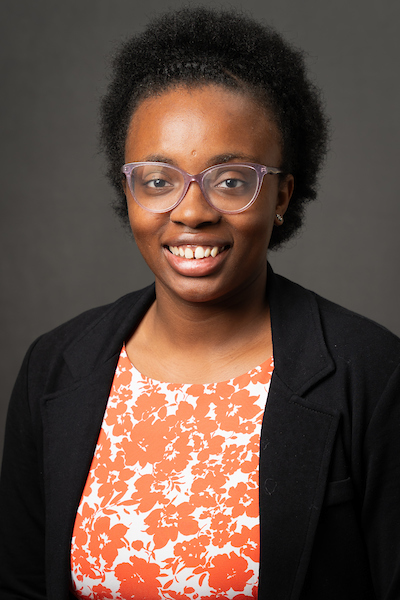
Faith Blanchard-Ludanga
Student Physical Therapist, College of Health Professions, Department of Physical Therapy
Faith Blanchard-Ludanga is the College of Health Professions Research featured spotlight this month. She is a third-year physical therapy student, dedicated to her academic and research pursuits. As a wife and mother of two boys, Faith draws inspiration from her family. Her husband, a South Sudanese refugee, and their experiences as a refugee family in Uganda, where their first son was born, have significantly shaped her career path. Faith’s encounters with the healthcare system during her pregnancy and delivery in the refugee community have driven her commitment to complete her physical therapy degree and engage in research that seeks to address the challenges faced by her community.
Describe how your understanding of physical therapy has evolved since you started the graduate program?
My initial introduction to physical therapy occurred when my mother was referred for treatment due to chronic back pain. I was deeply impressed by the therapist's personable and caring approach. As I have advanced through my program, my intrigue for physical therapy has transformed into a genuine passion for my future profession. I vividly recall being captivated during our introductory classes as we explored the extensive scope of physical therapy practice and the diverse specialties available, ranging from oncology to postpartum care.
Physical therapy is an incredibly versatile field, adept at meeting the varied needs of many individuals. As movement-system experts, we recognize that movement is fundamental to the human experience. Whether assisting a bed-bound patient with mobility or helping an injured individual return to work and support their family, we are trained to significantly enhance our patients' quality of life and functional capabilities.
The aspects of physical therapy I value most are its relationship-driven nature and our capacity to advocate for our patients. We are privileged to spend an hour or more with each patient, allowing us to thoroughly understand their unique circumstances and the barriers that may impede their health outcomes. This in-depth interaction enables us to form meaningful connections and provide tailored, effective care.
What publications or presentations have you contributed to and what have you learned from those experiences?
During Graduate Research Day (GRD), I presented a poster entitled "Addressing Inequities in Maternal Health: Exploring Socioeconomic and Healthcare System Factors Across Culturally Diverse Regions." The primary objective of this research was to enhance understanding of the various interventions being implemented in sub-Saharan Africa to reduce maternal mortality, given that an estimated 70% of all maternal deaths in 2020 occurred in this region.
Through this experience, I have come to appreciate the significant challenges and immense importance of research. GRD featured a diverse range of topics, providing me with valuable learning opportunities. I particularly enjoyed sharing insights on maternal mortality with fellow participants, including biochemists, cancer researchers, and medical students.
While data on maternal mortality is publicly available, not everyone has the motivation or passion to delve into this critical issue. My experience has fueled my commitment to advancing research and addressing these pressing health disparities.
What have been the most significant findings or contributions from your research so far?
One of the main findings of the research was that countries meeting the United Nations' Sustainable Development Goal for reducing maternal mortality employ a holistic approach, utilizing interventions across multiple sectors and societal levels. A particularly notable finding relevant to my future career as a physical therapist was the correlation between the presence of skilled health professionals and reduced mortality rates. Interestingly, the data showed a stronger correlation between the number of nurses and midwives and reduced mortality rates than with the number of physicians. This may be attributed to the fact that nurses and midwives often have more time and interactions with patients than physicians.
As a future physical therapist, I am intrigued by the potential impact of including physical therapists on maternal care teams. Physical therapists, as skilled health professionals who spend significant amounts of time with patients, could contribute to the early detection of complications. Additionally, we are well-equipped with the expertise to address the musculoskeletal changes that occur during pregnancy and delivery, potentially mitigating some complications and improving overall maternal health outcomes.
You have a mentor; can you tell us the following: How did you meet? How has this person influenced your academic and research journey? How does the person help you navigate academic and research challenges or obstacles?
My mentor, Mia Fox, PT, DPT, and I connected through the College of Health Profession’s Ambassador Program. I am profoundly grateful for Mia's guidance and support. Upon our first meeting, she inquired about the specific areas where I needed assistance. I expressed my interest in research and my uncertainty about how to begin. Mia dedicated several meetings to help me clarify my research interests and formulate a strong research question.
Throughout this process, she addressed numerous questions I had and ensured I remained accountable to my research commitments, despite my other engagements. Additionally, Mia provided invaluable assistance in creating a research poster and effectively presenting our findings. Her guidance enabled me to convey the main points of our research clearly and concisely.
What are your future career goals and how has your graduate education shaped these aspirations?
My career goals are to contribute to the improvement of maternal outcomes globally, excel as a skilled physical therapist, and enhance the quality and quantity of research and data collection in sub-Saharan Africa. My education has equipped me with the tools to be an excellent physical therapist and a strong advocate for my patients. Additionally, it has highlighted the importance of contributing to the field beyond clinical practice through research.
What do you like to do outside of school (i.e., personal hobbies or interests)?
I enjoy outdoor activities with my boys, spending time with friends (especially when good food is involved), and engaging in creative pursuits such as drawing, painting, and singing loudly and off key. Recently, I have taken up sewing and successfully completed my first pair of pants with a whole lot of supervision and corrections.
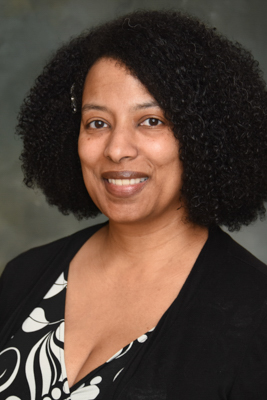
Keisha Brooks Burnett, EdD
Associate Professor
Program Director, Cytotechnology and Histotechnology
College of Health Professions
Department of Diagnostic and Health Sciences
Dr. Keisha Burnett is featured in this month's College of Health Professions Research Spotlight. Dr. Burnett joined the College of Health Professions as an Instructor in April 2005 and has since advanced to the position of Associate Professor in the Department of Diagnostic and Health Sciences. Her career began 25 years ago as a cytotechnologist and has dedicated 19 years to the Master of Cytopathology Practice Program, serving as a faculty member and, since 2019, as the program director. She holds a Bachelor of Science in Biology from the University of Tennessee at Martin and a Bachelor of Science in Cytotechnology from the University of Tennessee Health Science Center. Furthering her education, Dr. Burnett obtained a Master of Science in Healthcare Administration from Central Michigan University and a Doctoral degree in Educational Leadership from the University of Memphis. She is also a Board-Certified Cytologist through the American Society of Clinical Pathology. Dr. Burnett research interest is focused on Cytopathology, Higher Education, and Instructional Design and Technology.
What attracted you to pursue a career in higher education and what is the most gratifying aspect of working in education?
I am deeply passionate about my work, and since graduating from the cytology program in 1999, I have consistently sought opportunities to teach and mentor aspiring cytologists. During my tenure in private practice, I eagerly volunteered to assist in the instruction and mentorship of cytology students rotating through the lab. It was an exciting and honorable moment when I was invited to teach in the very program from which I graduated. The most gratifying aspect of my role in education is witnessing the moment when a concept finally clicks for my students. Seeing that lightbulb moment is my indicator that I have successfully fulfilled my responsibilities.
Can you share a project or initiative you're currently working on and what you want others to know about this research, and why it excites you?
I am a co-investigator on a $1.3 million grant from the National Institute of General Medical Sciences, alongside Dr. Jacen Moore and Dr. Rebecca Reynolds. The grant, titled "High School to Health Care" (HS2HC), aims to provide summer camp opportunities in medical lab science and health data science for rural high school students. Additionally, the grant funds a week-long summer session for rural high school teachers, focusing on lab and data science. This program is designed to equip teachers with curriculum resources that can be tailored to their biology, chemistry, healthcare, and health science classes.
I am also collaborating with my cytology students on a research project examining the proliferation patterns of benign leiomyomas, commonly known as uterine fibroids. Uterine fibroids are the most common benign smooth muscle tumors of the female reproductive system and are particularly prevalent among women of African descent. As someone personally affected by uterine fibroids, I shared my experience in my gynecologic cytopathology course and discovered that several students have African American family members who have also been affected. What began as an informal class discussion has evolved into a research project that we aspire to present to the scientific community.
How do you balance teaching, research, and other responsibilities as a faculty member?
Balancing teaching, research, and administrative responsibilities as a faculty member and program director can be complex and occasionally stressful. To effectively manage these demands, I prioritize tasks and maintain an electronic calendar to track important deadlines. Additionally, I am proactive in delegating tasks to faculty members, which helps reduce stress and empowers them in their roles.
Tell us something about yourself (a fun fact or hobby).
Although it has been some time since I last engaged in this hobby, I enjoy creating intricate beaded necklaces and bracelets. Once my schedule allows, I plan to revisit this craft and resume making jewelry.
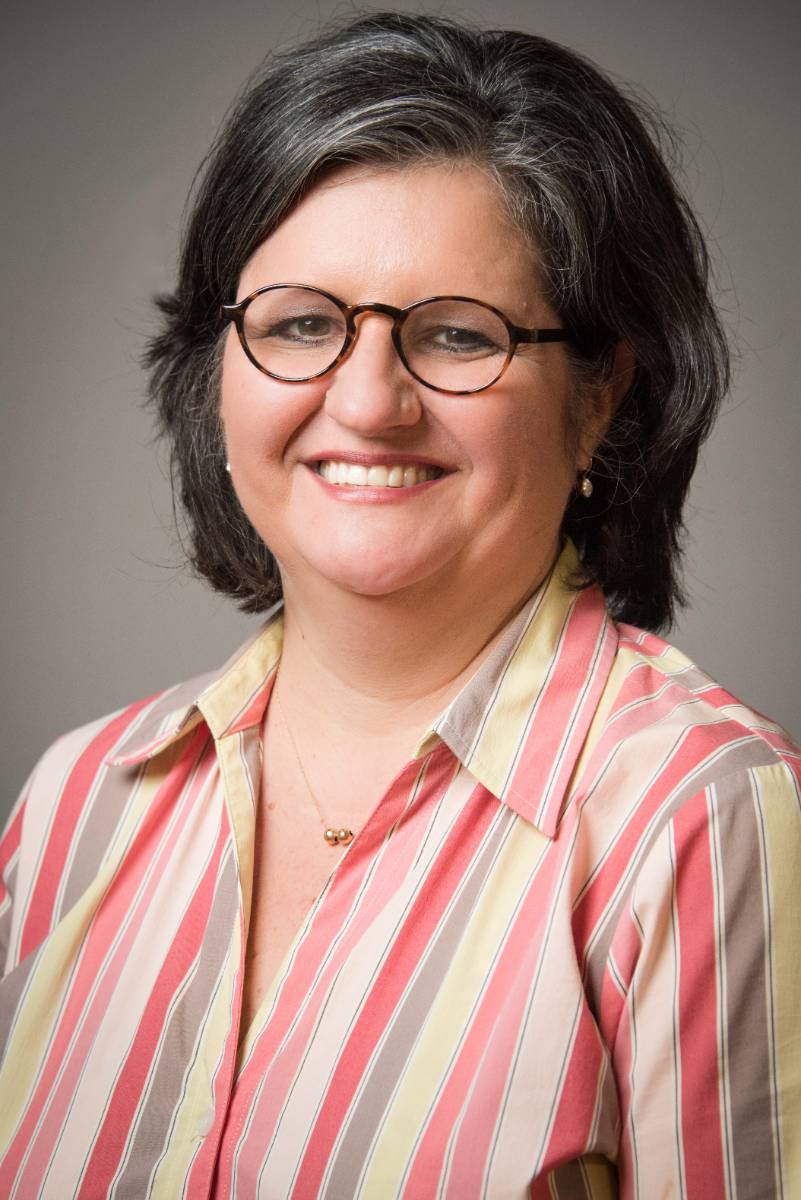
Rebecca B. Reynolds, EdD
Professor and HIIM Program Director
College of Health Professions
Department of Diagnostic and Health Sciences
Dr. Rebecca Reynolds is featured in this month’s College of Health Professions Research Spotlight. A Professor in the Department of Diagnostic and Health Sciences, she joined the College of Health Professions as an Assistant Professor in July 2002 and has made UTHSC her professional home ever since. Dr. Reynolds earned her EdD in Higher and Adult Education from the University of Memphis in 2008. Her research focuses on Health Information Management, with extensive experience in managing health data and mapping ICD-9 and ICD-10 codes to identify specific conditions. Dr. Reynolds is deeply knowledgeable about the healthcare delivery system and the flow of clinical information, which is often influenced by reimbursement rules. This expertise is crucial for locating patient information from various databases, as reimbursement rules dictate how clinical information is translated into medical codes. Additionally, she has extensive knowledge of legal issues related to health information, privacy, security, data structure, and secondary data use. Dr. Reynolds' real-world recognition of issues impacting medical code assignment enhances her contributions to research projects. As the HIIM program director, she helped establish a track in the Health Outcomes and Policy Research doctoral program in the College of Graduate Sciences. Dr. Reynolds enjoys being part of the UTHSC community and supports the mission and values that UT brings to the citizens of Tennessee.
What attracted you to pursue a career in higher education and what is the most gratifying aspect of working in education?
I love challenges and change, which is why I have enjoyed my years working in education at UTHSC. I am honored to work here and oversee our HIIM program. I enjoy working with a diverse range of people, and interacting with students from various backgrounds and with different goals continually challenges and broadens my perspectives. It is incredibly rewarding to see our graduates excel in their personal and professional lives and knowing that our field offers excellent opportunities for career advancement continues to inspire and excite me.
Can you share a project or initiative you're currently working on and what you want others to know about this research, and why it excites you?
I am a co-principal investigator on a $1.3 million grant from the National Institutes of Health Science Education Partnership Award (SEPA) program. This grant is funding the creation of an educational program called High School to Health Care (HS2HC), aimed at promoting lab and data science careers among K-12 students and science educators in rural West Tennessee. The HS2HC program has three main components. The first is a dual enrollment course through UT Martin, offering lab and data science curricula to 11th and 12th-grade students. The second component focuses on professional development and training for rural teachers, allowing them to learn about these professions, explore their potential, and facilitate outreach by COHP faculty to promote UTHSC and lab and data science careers within the community. The final component is a summer experience where students engage hands-on with lab and data science professions, interact with STEM content, and work directly with UTHSC COHP professional faculty. Our goal with HS2HC is to increase awareness of lab and data science fields and to enhance the health literacy skills of students and their families. We are extremely excited about the potential impact of this program.
What additional information or insights you would like to share about your area of research and the impact it will have on your field?
Lab and data sciences are among the fastest-growing professions in the health field. To meet the increasing workforce demand, we must find new and innovative ways to promote and educate students and the public about these fields. Grants and programs like ours play a crucial role in addressing the shortage of qualified lab and data science professionals by creating a pipeline of students who may enter these professions. Additionally, we hope our community outreach efforts will improve health literacy in rural areas of West Tennessee and beyond.
How do you balance teaching, research, and other responsibilities as a faculty member?
One of my mentors, Beth Bowman, once told me that being a faculty member is like being an entrepreneur; you must run your own business, which is you. Working in higher education isn't for everyone, as it requires balancing a variety of skills. This ability develops over time, and incorporating different missions into your projects is one way to succeed in academia. Another crucial aspect is having supportive colleagues who help you improve. My colleague, Dr. Marcia Sharp, has been instrumental in my success in higher education.
Tell us something about yourself (a fun fact or hobby).
As a recent empty nester, I'm transitioning from being a busy mom to rediscovering my hobbies and reconnecting with friends. I enjoy spending time with my son and husband in the country and at the beach.

Professor and Program Director in Audiology
Assistant Dean of Faculty Affairs
pplyler@uthsc.edu
865.974.7588
Dr. Patrick Plyler is the focus of this month’s College of Health Professions Research
Spotlight. He is Professor and Program Director for the Department of Audiology and
Speech Pathology at UTHSC in Knoxville. He is also the Assistant Dean of Faculty
Affairs for the college. Dr. Plyler received his PhD in Speech and Hearing Science
from the University of Tennessee Knoxville and joined the Department of Audiology
and Speech Pathology (ASP) as an Assistant Professor in 2003. For over 25 years,
he has researched improving speech perception deficits in listeners with impaired
hearing, the efficacy and effectiveness of advanced features in hearing instruments,
and the acceptance of background noise. As evidence of his outstanding accomplishments,
Dr. Plyler received the 2023 University of Tennessee Alumni Association Distinguished
Service Professor Award in recognition of demonstrated excellence as a scholar and
teacher in the classrooms and laboratories of the University of Tennessee.
What attracted you to pursue a career in higher education and sparked your research
interests as an Audiologist and Hearing Professional?
As an undergraduate student, I wanted to become an English teacher, and during high
school, I enrolled in an observation course and decided that path was not for me.
My sister is an Occupational Therapist, and she encouraged me to consider Speech-Language
Pathology, so I changed my major to Audiology Speech Pathology. I enjoyed the SLP
courses but found the Audiology courses more interesting. I guess you could say I
found Audiology “through the backdoor.” After earning my Masters in Audiology from
UTK in 1993, I worked as an Audiologist at the Bill Wilkerson Center, which also housed
the Audiology program for Vanderbilt University. During this time, I supervised and
taught clinical students and found I enjoyed teaching the students as much as seeing
the patients. I also had the opportunity to participate in research projects while
at Bill Wilkerson. These experiences led me to consider an academic career, as I always
wanted to become a teacher. My mentor, Dr. Sam Burchfield, encouraged me to pursue
a PhD; the rest is history.
Can you summarize your current research on digital hearing instruments, what you want
others to know about this research, and why it excites you?
One obstacle facing audiologists during hearing aid evaluations is determining the
appropriate technology level for a given patient. Modern hearing aids vary significantly
in terms of their technological sophistication and, consequently, the cost. Hearing
aids at the basic technology level include noise-combatting features such as directional
microphones and noise-reduction algorithms. Hearing aids at the premium technology
level offer these features but include additional complex automatic and adaptive versions
and other features not included in the basic-level hearing aids. It would stand to
reason that a more advanced technology level would provide increased benefits to the
user in daily life, thereby justifying the increased cost of premium technology devices.
However, research evaluating the effect of technology level on patient outcome measures
does not support this assumption for all users.
Recently, my colleague Dr. Jennifer Hauslanden and I (and our AuD students) completed
two research projects that evaluated the effect of technology level on patient outcome
measures for inexperienced and new hearing aid users. Each study obtained outcome
measures within and beyond the laboratory setting. Results revealed similar outcomes
between technology levels on most measures; however, using the premium technology
in both studies significantly improved the ability to tolerate background noise. Interestingly,
preference results for experienced and new users suggested listeners in more demanding
environments preferred premium hearing aids to basic hearing aids. This result may
be due to their improved ability to tolerate noise, which was noticeable in their
demanding daily lives. Our findings suggested that individual characteristics such
as noise tolerance and listening demands may be useful to audiologists when comparing
hearing aid technology levels for hearing aid users.
Are there any additional information or insights you would like to share about your
research and the impact you hope it will have in audiology?
I would like to shed some light on the topic of over the counter (OTC) hearing aids.
OTC hearing aids are entry-level products for individuals with mild-to-moderate hearing
loss and those who have limited access to an audiologist or with limited financial
resources. While this sounds great, I am concerned with educating those outside of
our profession about the pros and cons of OTC hearing aids. We all learned early in
our audiology training that our patients need to be counseled after a hearing aid
fitting regarding realistic expectations, as hearing aids do not correct hearing loss.
I am concerned OTC users will not understand the limitations of any hearing aid, much
less an OTC. Also, many potential users will seek the advice of health care providers
such as their primary care physician, a nurse, or a pharmacist. These professionals
need some basic training on this topic, and they truly need to understand that obtaining
OTC hearing aids for hearing loss is not the same as buying reading glasses for vision
problems.
What advice would you give to someone just starting their career?
Well, this may sound simplistic, but I would advise finding a setting where you feel
like part of the family and in a location you enjoy.
Tell us something about yourself (a fun fact or hobby).
My wife is also a faculty member in ASP as a clinical audiologist specializing in
pediatrics. We have two wonderful children, Carson (23) and Caroline (19). We are
huge sports fans and enjoy watching and attending sporting events together.
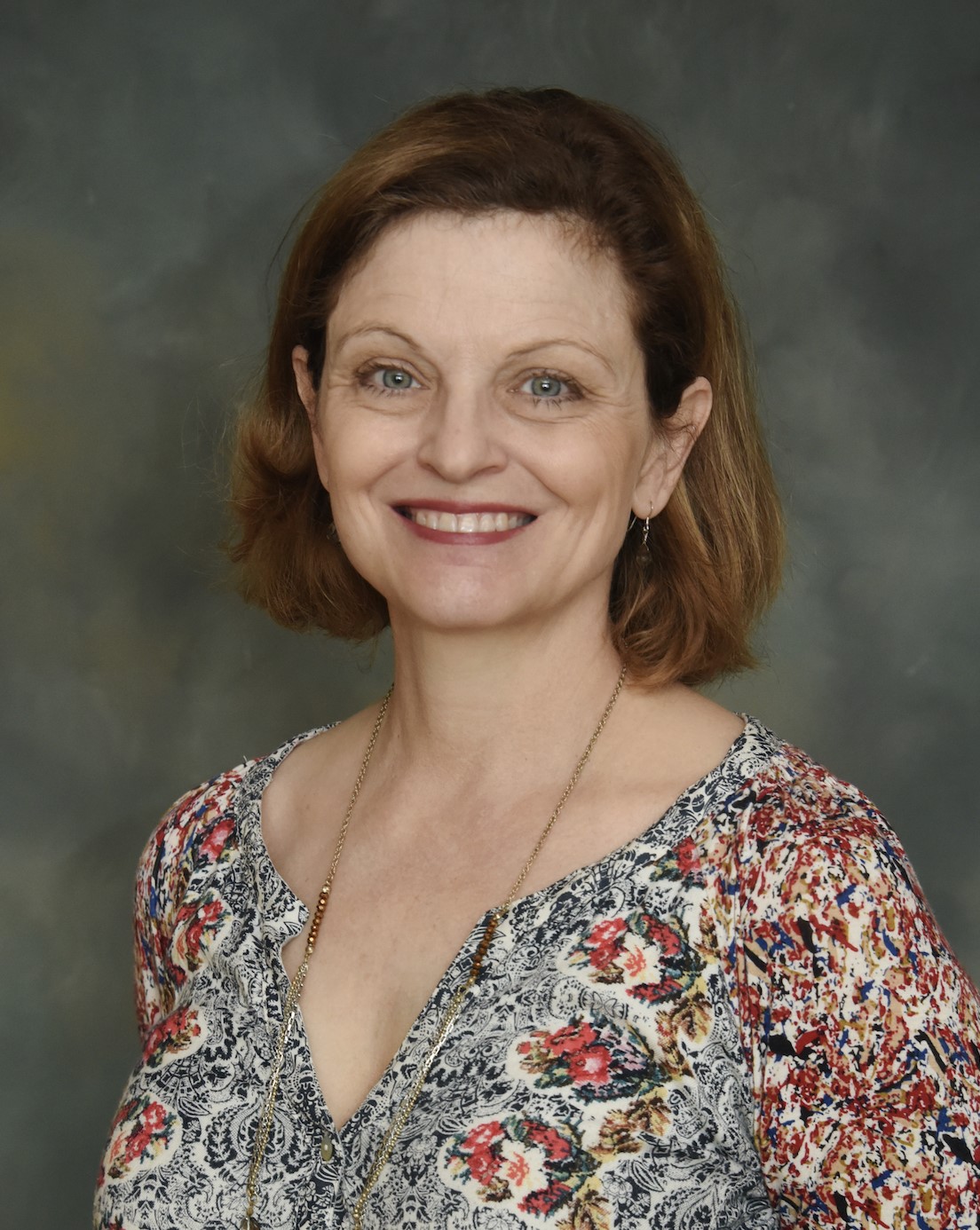
Associate Professor College of Health Professions Department of Occupational Therapy
azachry@uthsc.edu
This month the College of Health Professions Spotlight is focused on Anne Zachry, PhD, OTR/L. Dr. Zachry received her PhD in Educational Psychology & Research from the University of Memphis in 2010 and she joined UTHSC in 2013 as a faculty member in the Occupational Therapy program and currently serves and as the Chair of the UTHSC Department of Occupational Therapy program. Dr. Zachry’s research interests include enhancing infant and child development through the provision of occupational therapy services. Her blog, “Pediatric OT Tips” has been ranked as a top OT blog for the past 7 years. In 2016, she received the Student Government Association Executive Council Excellence in Teaching Award and was a finalist for the Memphis Business Journal Health Care Heroes Award. Dr. Zachry received the UTHSC Alumni Association Public Service Award in 2016. Her books, “Retro Baby” and “Retro Toddler” were published by the American Academy of Pediatrics. “Retro Baby” won the Benjamin Franklin Gold Award in 2013.
Her primary research interests are Pediatric Occupational Therapy, Infant and Child Development and Adverse Childhood Experiences.
Could you tell us about your research team's current HRSA: Health Resources and Services Administration funded project titled "RISE-CAY"? What do you want others to know about this project, and why does it excite you?
The RISE-CAY project, a collaboration between the University of Memphis and the UT Health Science Center, is funded by the Health Resources and Services Administration (HRSA) Behavioral Health, Workforce Education, and Training-Children, Adolescents, and Young Adults (BHWET-CAY) Program for Professionals. RISE-CAY stands for Recruiting Interprofessional Scholars for Excellence in Childhood, Adolescence, and Young Adulthood. The grant targets crucial areas like integrated behavioral health, cultural humility and competency, adverse childhood experiences, telehealth, and social determinants of health, particularly in rural and underserved communities. The project encompasses four disciplines across seven-degree programs, from social work and counseling to psychiatry and occupational therapy.
The program's structure, which includes synchronous training sessions, practicums, internships or residencies, and a culminating case competition, exemplifies comprehensive education. It offers substantial stipends for participants, recognizing the importance of their dedication. For me, the most exciting aspect is the interdisciplinary nature of the grant. The collaboration between multiple programs at two respected institutions aims to strengthen healthcare delivery to underserved populations. There is potential to make a significant difference in the lives of young individuals, supported by expertise from a broad spectrum of healthcare fields.
In your professional career, what do you consider to be your greatest achievement or most rewarding?
In my early years as an occupational therapist, I treated a precious 3-year-old little girl, named Emma. Emma had sustained a traumatic brain injury that made even the most basic tasks extremely challenging. One day, during a treatment session Emma’s father asked, "How do you know what you are doing will help her?" After a long deep breath, I responded, "Even though I don't always know what activities will be the magic ones that will help, I do know the treatment activities selected are all grounded in research." What I didn't share with Emma's father that day was how much time I regularly spent searching to find an evidence-based treatment approaches. My passion and dedication to help this child overcome her injury proved successful
and Emma would grow up to become an independent adult! Years later, this family inspired me to further my education in advancing intervention research in the field of occupational therapy. In 2009 I earned my PhD in Educational Psychology & Research.
What is the most important thing you have learned about having a successful career and what advice would you give to someone just starting their career?
Having grit, determination and never giving up are important qualities to possess. I learned this while I was looking for a publisher, for my first book. I received so many rejection letters, but I refused to let that deter me and I eventually found a publisher! Submitting to peer-reviewed journals and reviewing student course evaluations can also be discouraging. The key is to stay positive and keep moving forward.
In your professional career, what do you consider to be your greatest achievement or most rewarding?
My greatest and most rewarding achievement was having my parenting books published by the American Academy of Pediatrics (AAP). The AAP is extremely selective with the authors that they choose to publish. I was extremely honored when they committed to publishing “Retro Baby” and “Retro Toddler.”
Tell us something about yourself (a fun fact or hobby).
I love to read and ride horses! My horse, Sawyer, is a beautiful buckskin Tennessee Walking Horse. Spending a Saturday afternoon riding him is a wonderful way to relax.
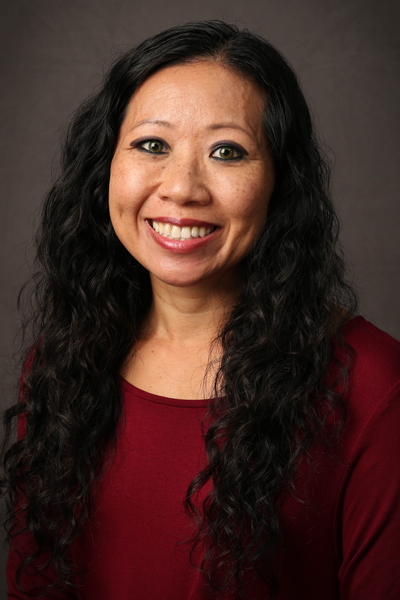
April Hilsdon, MOT, OTR/L
Instructor/ Academic Fieldwork Coordinator acheung1@uthsc.edu
Introduction:
This month's College of Health Professions Research Spotlight is on April Hilsdon MOT, OTR/L. She is an Instructor and Academic Fieldwork Coordinator for the Department of Occupational Therapy. April was the first in her family to pursue higher education, and she earned her master's degree in occupational therapy from UTHSC in 2008. She brings over fifteen years of diverse clinical experience to her Department of Occupational Therapy roles. Her specialty is in adult rehabilitation with a focus on brain injury and stroke recovery across various settings, from outpatient to home health. She has a strong commitment to Occupational Therapy that extends to nurturing the development of future professionals by enhancing her students' educational journey. Her approach emphasizes the importance of critical thinking and practical skills essential for success in occupational therapy. A passion and commitment to student mentorship drove April's journey into higher education. She enjoys facilitating student growth by working closely with them as a fieldwork educator. As an occupational therapist, she sees the impact that strong clinical judgment and reasoning skills can make in direct client care. The role of academic fieldwork coordinator allowed her to return to the program that shaped her and to now challenge students to grow beyond the classroom.
Her primary research interests are investigating strategies that enhance student performance and adaptability in clinical education. The goal is to equip students with the skills to navigate the complexities of healthcare settings successfully, which is essential for their professional growth and leads to better outcomes for their clients.
Could you tell us about your research team's current HRSA: Health Resources and Services Administration funded project titled "RISE-CAY"? What do you want others to know about this project, and why does it excite you?
The RISE-CAY project, a collaboration between the University of Memphis and the UT Health Science Center, is funded by the Health Resources and Services Administration (HRSA) Behavioral Health, Workforce Education, and Training-Children, Adolescents, and Young Adults (BHWET-CAY) Program for Professionals. RISE-CAY stands for Recruiting Interprofessional Scholars for Excellence in Childhood, Adolescence, and Young Adulthood. The grant targets crucial areas like integrated behavioral health, cultural humility and competency, adverse childhood experiences, telehealth, and social determinants of health, particularly in rural and underserved communities.
The primary investigator, Dr. Susan Neely-Barnes, is committed to ensuring RISE-CAY incorporates an interprofessional approach. The project encompasses four disciplines across seven-degree programs, from social work and counseling to psychiatry and occupational therapy. The program's structure, which includes synchronous training sessions, practicums, internships or residencies, and a culminating case competition, exemplifies comprehensive education. It offers substantial stipends for participants, recognizing the importance of their dedication. For me, the most exciting aspect is the interdisciplinary nature of the grant. The collaboration between multiple programs at two respected institutions aims to strengthen healthcare delivery to underserved populations. There is potential to make a significant difference in the lives of young individuals, supported by expertise from a broad spectrum of healthcare fields.
What is the most important thing you have learned about having a successful career, and what advice would you give someone just starting their career?
The most important lesson I've learned in my career is the power of adaptability. It's about having the courage to reevaluate and adjust your goals when unexpected changes occur. This adaptability has been crucial in my personal and professional development. For those just beginning their careers, my advice is to embrace the process of continuous learning and to actively seek out challenges. Find mentors who can guide you, be open to new experiences, and always make room for your well-being alongside professional ambitions. Above all, be resilient and maintain a positive attitude. These qualities will serve as your foundation during challenging times. Success is not just achieving your goals but evolving with them.
In your professional career, what do you consider to be your greatest achievement or most rewarding?
The most rewarding aspect of my career has been the dynamic shift from clinical practice to academia. This transition allowed me to expand my impact on the occupational therapy field. In my role, I have the privilege of shaping the healthcare providers of tomorrow. There's a profound satisfaction in witnessing the growth of my students as they apply their knowledge in various clinical settings. My role in helping them develop their professional abilities and watching them grow into competent therapists is what I consider my most notable accomplishment. Through this teaching and mentorship process, I can leave a lasting mark on the individuals I teach and the broader field of healthcare.
Tell us something about yourself (a fun fact or hobby).
I have a passion for ultra-running! I find it exciting to push the limits of my endurance and determination. My proudest moment as an ultra-runner came in 2022 when I completed the Arkansas Traveler 100-mile race. I love trail running because it's a way to connect with nature and explore beautiful landscapes. Running offers me an opportunity to disconnect from the daily grind, allowing me to clear my mind from the stresses that come with professional and family responsibilities.

Ilsa Schwarz, PhD, CCC-SLP, FASHA
Professor Emeritus/Adjunct Professor ischwarz@uthsc.edu
Introduction:
This month’s Research Spotlight features Dr. Ilsa Schwarz, a Professor Emerita in
the Department of Audiology & Speech Pathology. Along with her colleagues and students,
she explores the linguistic and cognitive aspects of reading comprehension, focusing
on vocabulary, phonological awareness, and spelling. The primary goal of her research
is to ultimately create language and literacy assessments and interventions. Her research
focuses on individuals with typical hearing and those who are deaf or hard of hearing,
as well as individuals with moderate to severe disabilities with complex communication
needs. Dr. Schwarz works closely with colleagues in Knoxville and Memphis, whose mutual
interests have inspired her to successfully write grants to fund master’s and doctoral
student training in these critical areas.
What attracted you to pursue a career in higher education (highlighting your academic
journey and research interests as a Language and Literacy Development Professional)?
While earning my master’s degree at the University of Oregon, I taught undergraduates
through a large university-based service-learning program. At that time, I realized
how much I enjoyed university teaching and decided to pursue my Ph.D. after completing
my professional certification requirements as a speech-language pathologist. In addition
to teaching university students, I have appreciated the ability to work in departmental
and university administration, serving in a leadership role at the University of Oregon,
the University of Canterbury (New Zealand), and in Tennessee. I have always known
that I was most interested in supporting young children to improve speech, language,
and literacy skills, so this has been the focus of my research and teaching.
Could you summarize your recent ED award, “Project-PAL,” and what you want others
to know about this project and why it excites you?
This new grant award Project-PAL (Preparing Academic Leaders to Teach, Conduct Research,
and Engage in Professional Services to Improve Language and Literacy Outcomes for
Children with High Need Communication Disorders) was created in collaboration with
my colleagues Dr. Jillian McCarthy and Dr. Erinn Finke in Audiology & Speech Pathology
at UTHSC, and Dr. Melanie Schuele at Vanderbilt University, along with community service
providers, LEAs, and families of children with high need communication disorders (HNCDs).
We wrote this doctoral training grant to advance the preparation of critically needed
leadership personnel to serve as university faculty. The grant will support four years
of doctoral study for a total of three speech-language pathologists (SLPs) at UTHSC
and three at Vanderbilt to graduate with the specialty preparation needed to teach,
conduct research, and provide culturally and linguistically responsive services to
improve the language or literacy outcomes for children with HNCDs. For purposes of
the grant, ‘HNCDs’ refers to low- and/or high-incidence disabilities that require
high-quality and high-intensity language and literacy assessments and interventions
to make social and academic progress. This group will include children from birth
through school-age with complex communication needs (CCN) who require assistive technology/augmentative-alternative
communication (AT/AAC) support. Although children with HNCDs are diverse, they are
unified in their need for linguistically and culturally responsive, intensive, and
systematic research-based support. They also require individualized services provided
by professionals with specialized knowledge and skills with high language and literacy
development expectations.
Considering your entire professional career, what do you consider to be your greatest
or most rewarding achievement?
Honestly, over a more than 40-year career, I cannot think of any single achievement
that stands out. I have taught hundreds of students and have always been thankful
for the opportunity to be included in their academic journey. My collaboration with
colleagues, both academic and administrative, has also been a highlight of my work.
My research and grants would not be successful without my faculty colleagues and the
individuals who support our research and grant submissions and help organize our budgets.
As a result of my participation in administration, instruction, and service activities,
I have received an Editors Award for outstanding research, served as Editor of a professional
journal, have been made a Fellow of my professional organization, and currently serve
on an international advisory board for research that improves language and literacy
outcomes for school-age children. All these achievements must be shared with others.
What additional information or insights would you like to share about your research
or its impact on your field, and what advice would you give someone just starting
their career?
I hope that the work I have done and continue to do will ultimately improve the lives
of young children and their families. I know that the master’s and doctoral students
we support through grant funding will go on to work with young children and make a
difference in their ability to communicate and learn. The ability to communicate effectively,
whether orally, in sign, or in written format, is life-altering. Whether a speech-language
pathologist works with children or not, I would encourage someone starting their career
to enjoy the profession, support their colleagues, and know that they can make a difference
in improving the lives of the people we serve.
Tell us something about yourself (a fun fact or hobby).
I retired in 2013, and my husband and I moved to California to be closer to our families.
We live in beautiful wine country and enjoy travel since I can teach through in-person
visits to Tennessee and using Zoom. With one daughter now living in Oregon and the
other in New Zealand, Zoom is a gift, and travel is both necessary and fun.

Introduction:
Chermale K. Casem, MBA, PHR, CDE®, is a distinguished professional with over two decades
of senior financial and administrative leadership experience. She currently holds
the position of Executive Assistant Dean for Finance, Operations, and Strategic Initiatives
in the College of Health Professions. Throughout her career, Chermale has demonstrated
exceptional expertise in overseeing multi-million-dollar initiatives aimed at supporting
vulnerable, low-income, and minority adult and child populations. Her record of accomplishments
includes successfully leading state and federal workforce, economic development, and
asset-building programs, with funding from prestigious agencies such as the TN Department
of Human Services, US Department of Agriculture, US Department of Labor, and Health
and Human Services.
Chermale's credentials also include being a certified Professional in Human Resources
(PHR) and a Certified Diversity Executive (CDE®). In these roles, she has designed
workforce curriculum, delivered soft skills training, and managed professional development
services across various sectors, including the public sector, private industry, government,
and higher education. She earned her bachelor’s degree in finance from the University
of Tennessee-Knoxville and a master’s in business administration from the University
of Memphis. Chermale is a proud graduate of Leadership Memphis' 2014 Executive Class,
further highlighting her commitment to leadership and excellence.
Tell us about yourself and what attracted you to pursue a career in higher education?
I pursued a career in higher education for several reasons, all of which deeply resonate
with my passion and strong belief in the power of education to transform individual
lives and society. One key motivator was my own transformative educational experience
as a student. During my undergraduate and graduate studies, I had the privilege of
being taught and mentored by some incredible educators who not only imparted knowledge
but also inspired critical thinking and personal growth. I wanted to pay that forward
and be a part of the positive impact that higher education can have on students.
Additionally, I am drawn to the idea of fostering a culture of inclusivity and diversity
within academia. I believe that higher education should be a place where people from
all backgrounds have equal opportunities to learn, grow, and contribute. In my current
position, I can actively promote this vision and work towards a more inclusive and
equitable educational environment for students, staff, and faculty.
Tell us about your recent HRSA award and what do you want others to know about this
project and why it excites you?
I am delighted to share information about the recent Health Resources & Services Administration
(HRSA) award of $3.249 million that has been granted to support our new Health Careers
Opportunity Program (HCOP) in The College of Health Professions. This 5-year grant,
named "Reimagining Education for Advance Careers in Healthcare" (REACH), holds great
significance for us as it aligns perfectly with our mission and excites me for several
reasons.
The primary goal of the REACH project is to fortify healthcare education while addressing
the pressing need for a skilled and diverse healthcare workforce in West Tennessee.
This initiative is composed of three distinct programs, each catering to different
stages of a student's academic journey. The HCOP Saturday Academy targets juniors
and seniors in high school from underserved communities, providing them with valuable
exposure to various health professions. The HCOP Pre-Matriculation Academy focuses
on undergraduate students in their junior and senior years who aspire to enter a healthcare
profession. Lastly, the HCOP National Ambassadors Program is designed for graduate
students already enrolled in UTHSC's College of Health Professions, with a special
emphasis on professional development, social determinants of health, and social/emotional
support services.
What genuinely excites me about this project is the transformative impact it will
have on our community. This HRSA award will enable us to establish crucial community-based
partnerships, creating an educational pipeline for aspiring health professionals.
It will also facilitate significant improvements in healthcare access and equity within
the urban and rural communities we serve. As someone who has successfully secured
HRSA awards in the past, I am confident that this funding will play a pivotal role
in advancing our mission and making a real difference in the lives of individuals
pursuing careers in healthcare. The possibilities for positive change are truly boundless,
and I am thrilled to be a part of this endeavor.
In your professional career, what do you consider to be your greatest achievement
or most rewarding?
Steven Covey's words, "Trust is the glue of life," resonate deeply with me. Throughout
my professional career, I consider my ability to foster an environment of trust and
collaboration as one of my most rewarding achievements. In our increasingly complex
world, no one can lead, adapt, or innovate in isolation. My commitment to building
relationships through integrity-based communication has been instrumental in my ability
to successfully lead and adapt in various professional roles. This has not only brought
personal satisfaction but has also contributed significantly to the generation of
innovative solutions and achievements from the teams and organizations I have been
a part of. Trust, as the foundational glue of effective communication and relationships,
remains at the core of my professional philosophy.
What is the most important thing you have learned about having a successful career,
and what is the best advice you can give to someone just starting their career?
Throughout my career, I have adhered to the philosophy of poet Ralph Waldo Emerson
- “Do not follow where the path may lead; go instead where there is no path and leave
a trail.” The best advice that I can share with someone just starting their career
is to find a career path that aligns with your passions and values, never stop learning,
be open to change and innovation, and seek out mentors who can provide guidance and
advice based on their experiences. And most importantly, remember to take care of
your physical and mental health. A healthy body and mind are essential for a successful
career.
Tell us something about yourself (a fun fact or hobby).
Traveling is my absolute favorite hobby, and it is something that has enriched my
life in numerous ways. The world is an incredibly diverse and beautiful place and
exploring it has been a source of constant inspiration and personal growth for me.
Travel also offers a unique opportunity for personal reflection and self-discovery.
It is during these journeys that I often find moments of clarity, self-awareness,
and personal growth. Whether I am taking a hot air balloon ride across the mountains,
lounging on a beach, or wandering through a museum in a bustling city, the beauty
of nature and the world's rich tapestry never fail to amaze me. I look forward to
every opportunity to explore new destinations, make lasting memories with family,
and continue my journey of discovery around the world. My personal goal is to visit
every state and continent, and I am more than 70% there.
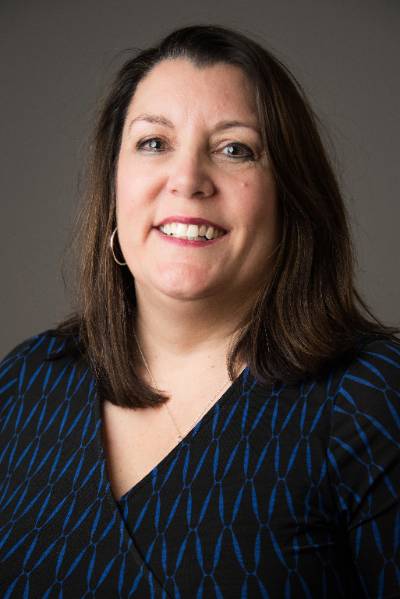
Who is Dr. Stephanie Lancaster?
Meet Dr. Stephanie Lancaster, she is an Occupational Therapist at the University of Tennessee Science Center, in the College of Health Professions. She holds a specialty certification as an Assistive Technology Practitioner (ATP) through the Rehab Engineering and Assistive Technology Society of North America (RESNA). With a BS in Occupational Therapy, she also holds a MA in Leadership and Policy Studies and a EdD in Instruction and Curriculum Leadership with an emphasis on Instructional Design and Technology. She is the producer and host of the On The Air podcast for people interested in occupational therapy related topics and is active in leadership positions on a national, regional, and local level, including serving on the board of the Tennessee Association for Assistive Technology (TAAT), as Membership Coordinator of the Coalition of Occupational Therapy Advocates for Diversity (COTAD), and as the representative for Tennessee on the Representative Assembly of the American Occupational Therapy Association (AOTA).
Tell us about yourself and what attracted you to pursue your career in academia?
I began my career as an occupational therapist in 1991 working at LeBonheur Children’s Medical Center. I practiced clinically full-time for 22 years and then moved into academia ten years ago, primarily in response to a personal experience during which one of my family members received inferior quality healthcare services. My goal since I started teaching in the OT program at UTHSC has been to support the program in producing person-centered, empathic, ethically grounded OT practitioners. In my mind, it is my responsibility and my privilege to co-construct knowledge with the students I teach. I believe that the educational process is a symbiotic one in which the duties associated with the transfer of knowledge and skills are shared between the teacher and the learner. I believe that everyone enters the learning space armed - and sometimes laden - with their own pre-constructed knowledge, experiences, perspectives, motivations, and habits of learning. As an educator, I see myself as a facilitator of the process of learning - a tour guide of sorts - and I recognize that every class session, every exchange in fact, offers an opportunity for learning and growth on both the part of the learner and the educator.
Tell us about an academic project you are working on now, a project you have previously worked on, or is there an exciting future project you have plans for? And what do you want others to know about this project and why it is important to you?
Something that’s important to me in my work is to give back to the professional community in leadership and volunteer roles. Currently I serve as President-Elect of the Tennessee Occupational Therapy Association (TNOTA). I will begin a two-year term as TNOTA President in January 2024. I am finishing up my second term as the state’s delegate on the Representative Assembly of the American Occupational Therapy Association (AOTA), the governance body responsible for the development and approval of professional policies and standards in the occupational therapy profession.
In addition, I serve as Chair of the Communications Committee of the Coalition of Occupational Therapy Advocates for Diversity (COTAD), a national non-profit organization for OT practitioners. This organization was formed in 2013 with a mission to empower occupational therapy leaders to engage in practices that increase justice, equity, diversity, and inclusion (JEDI); anti-racism; and anti-oppression for a transformative occupational therapy profession. In my role with COTAD, I am creating a repository of Capstone projects and other work addressing issues named in the mission statement by students in occupational therapy and occupational therapy assistant programs across the country. That database will be open for access on the COTAD website (www.cotad.org) soon.
In your professional career, what do you consider to be your greatest achievement or most interesting or rewarding?
One of the most rewarding aspects of my work as an OT educator is seeing our program’s alums flourish in the field.
What is the most important thing you have learned about having a successful academic career, and what’s the best advice you can give to someone just starting their career?
I always begin the first session of a course telling students that I look forward to learning alongside them, and I truly mean that, as that has been my experience in every course I have ever taught. In my training as an instructional designer, I learned to start with the end in mind; that is, I begin the process of teaching by clearly identifying what the outcomes of the course will be, and then I work backwards from there, carefully considering how the design of the course will most effectively meet the needs of the unique and diverse backgrounds, personalities, and needs of the learners in my class. I make a point to "out loud" the requirements of a course so that every learner knows the point of every assignment. I want to provide challenges that are at an appropriate challenge level for each student in my class. I strive to push them while at the same time doing my best to help them to feel supported.
My advice to someone starting off as an educator of future healthcare providers is to learn everything you can about inclusive teaching and to use that to recognize the uniqueness that each learner brings to the teaching and learning process. Consider the many opportunities for growth that occur outside the four walls of the classroom (for both educator and students) so that learning occurs not only through exposure to the material associated with a particular course but also in a way that is co-constructed and ongoing. And connect with fellow educators who support and strengthen you so that you are positioned to continue learning as you help others to do the same.
Tell us something about yourself (a fun fact or hobby).
I love all things technology and have my house set up as a Smart Home with automated processes like lights turning on or off and audio prompts being provided at set times or when I move into certain locations within the house. I am also a podcast enthusiast.
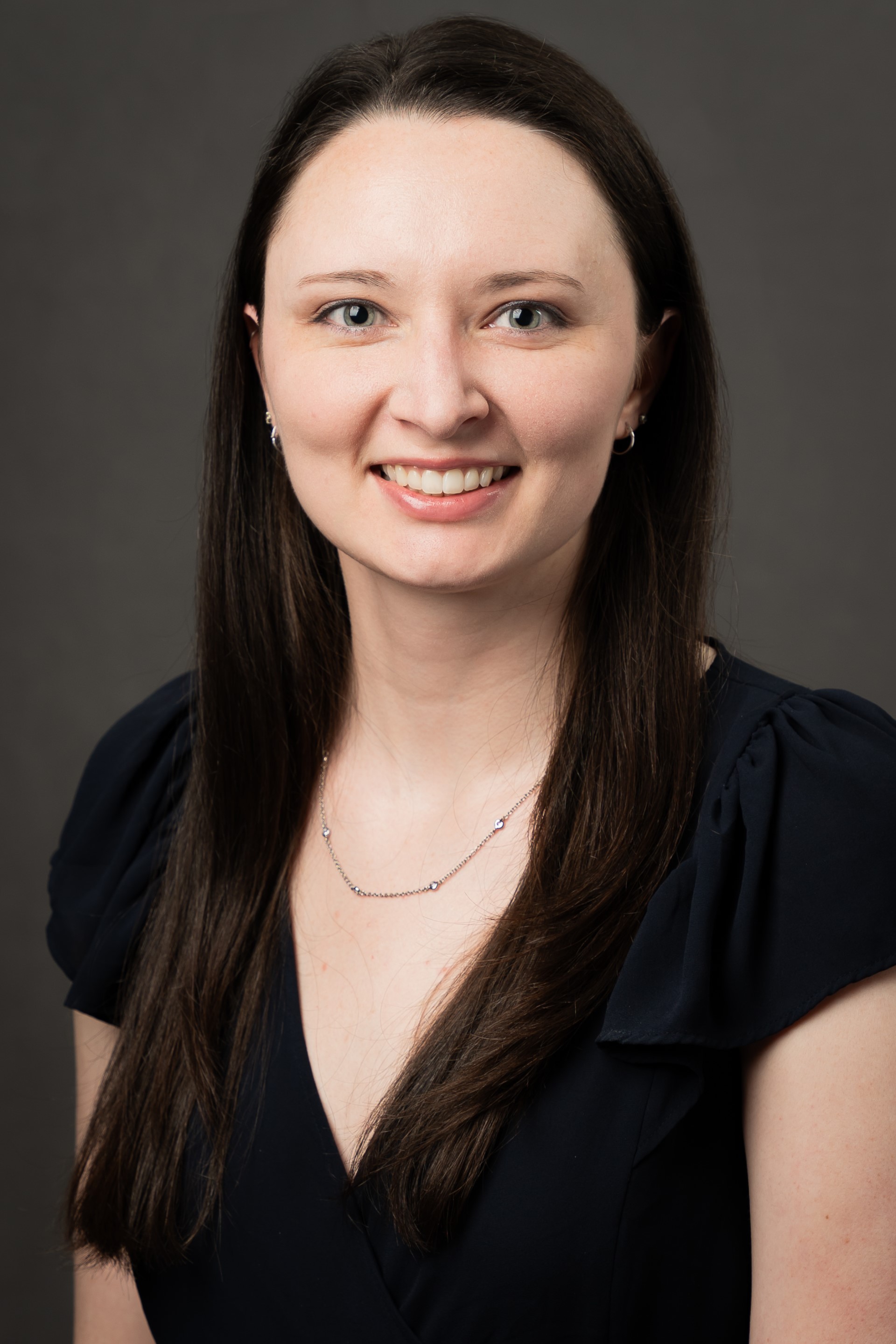
Jessica Hale
PhD candidate
Tell us about yourself and what motivated you to choose your field of study and research? And how has your research shaped your personal and professional growth as a graduate student?
My name is Jessica Halle and I am a PhD candidate in Dr. James Carson’s Integrative Muscle Biology (IMB) lab. My research involves understanding the mechanisms regulating skeletal muscle protein turnover and metabolism in health and disease. I have always been very curious, and science is a great way to answer questions about how the world works.
I first became interested in research during an undergraduate internship in Dr. Michael Zourdos' Human Muscle Physiology Lab. Dr. Zourdos' mentorship and guidance helped me to develop my research skills and passion for science. His support inspired me to pursue a graduate degree to further my education and scientific training.
In my graduate program under the mentorship of Dr. Carson, I have learned how to design and perform experiments and have collaborated with a lot of great scientists. Overall, these relationships have enriched my life and made me a better scientist.
Tell us about a research project you are working on now, a project you have previously worked on, or is there an exciting future project you have plans for? And what are the most significant implications of your research for the advancement of your field?
My dissertation research involves understanding the long-lasting effects of chemotherapy on skeletal muscle metabolism and if exercise can accelerate the functional recovery from chemotherapy. Overall, the long-term goal of our research is to identify therapeutic targets that can prevent or reverse skeletal muscle loss and weakness to improve cancer patient health and quality of life.
In your opinion, what are the most significant implications of your research and what do you consider to be your greatest achievement or most interesting or rewarding?
We recently published an article where we found that short-duration treadmill exercise training consisting of 15 minutes per day for two-weeks was as effective as longer duration exercise (60 minutes per day) to accelerate the functional recovery from chemotherapy. The current exercise guidelines for cancer patients mirrors that of healthy individuals, 30 minutes per day of moderate intensity activity up to 150 minutes per week. The results from this study provide evidence that smaller volumes of exercise can produce beneficial effects, which may be more achievable for patients who have undergone chemotherapy treatment.
What are the potential future directions for your career and research, and how do you see it evolving or expanding?
I would like to continue investigating the mechanisms regulating skeletal muscle protein turnover and metabolism during cancer and cancer treatment. In the future, I would like to teach and mentor students interested in science.
What’s the best advice you can give to someone just starting their journey in research?
Find a good mentor who will support you, provide advice and help you to develop your skills as a scientist and be open to collaboration.
Tell us something about yourself (a fun fact or hobby).
In my free time I enjoy reading, hiking, swimming, and biking.

Junaith S. Mohamed, PhD
Professor
Tell us about yourself and what attracted you to pursue your career in academics and research?
I am Junaith S. Mohamed, an Assistant Professor of Diagnostic and Health Sciences. I received my BS from Madurai Kamaraj University, MS from Bharathidasan University, and PhD from Manonmaniam Sundaranar University, India. I received my post-doctoral training from The University of Texas at Austin and Baylor College of Medicine. In 2015, I started my first faculty position as a Research Assistant Professor at West Virginia University School of Medicine. I joined UTHSC in June 2018. My academic training and research experience have provided me with an excellent background in multiple biological disciplines, including biochemistry, cell and molecular biology, genetics, and physiology.
My "Muscle and Nerve Laboratory" at the UTHSC is currently conducting research focused on understanding the molecular mechanisms of skeletal muscle growth and function, regeneration, and metabolism and the discovery and development of small molecules that may be useful to treat muscle disorders. My laboratory uses preclinical animal models, various in vitro, in vivo, gene knock-in and knock-out approaches, advanced genetic, cell, and molecular methods, bioinformatics tools, microarray, and deep sequencing tools. Research and teaching in an academic setting are two of my passions.
Tell us about a research project you are working on now, a project you have previously worked on, or is there an exciting future project you have plans for? And what do you want others to know about this research?
Currently, I am working on two projects: 1. To identify the underlying molecular mechanisms that contribute to muscle wasting and weakness in traumatic brain injury (TBI) and ischemic stroke. 2. To investigate the mechanisms of muscle regeneration/repair after injury at the cellular and molecular levels. The ongoing research in our laboratory is important because muscle wasting and impaired muscle regeneration in many diseases or disorders, cannot be prevented or reversed with current therapies. The outcome of our research will have future translational implications for the development of pharmacological drugs that target the players identified in our studies to treat muscle loss and functional deficit, thereby enhancing the health and quality of life of patients.
So far in your research and academic professional career, what do you consider to be your greatest achievement or most interesting or rewarding?
Currently, I am a Co-I in a research project that studying the effect of mitochondrial transplant therapy to restore skeletal muscle mass and function following neuromuscular injury. This is an exciting project because we uncovered that systemic mitochondria delivery can enhance the rate of muscle regeneration and restoration of muscle function following injury (Alway et al., J Cachexia Sarcopenia Muscle. 2023 Feb;14(1):493-507). I am also working on a project named “Genetic Influence of ADIPOR1 variants on Diabetes” (multiple PI project). In this project, we aim to analyze and map how mutations of a hormone receptor (ADIPOR1) lead to diabetes, generating data that may reveal new drug targets for prevention. Another interesting observation that we recently published was the interplay between caloric restriction (CR) and aging. Interestingly, we found that the activation of SirT1 protein by exercise or its activator along with CR likely has a better functional role in aging muscle (Myers et al., Genes (Basel) 2021 May 5;12(5):691). My research encompasses over 40-refereed publications in journals, such as Aging; Diabetes; FASEB J; Genes (Basel); J Biol Chem; J Cachexia Sarcopenia Muscle; J Gerontol A Biol Sci Med Sci; Oncogene; Mol Endocrinol.
What is the most important thing you have learned about having a successful research and academic career, and what’s the best advice you can give to someone just starting their career?
Bringing scientific advancements from the lab to the clinic (from bench to bedside) is a challenge that never ceases to exist. As a basic scientist, I am enjoying my research by myself asking basic biological questions, with a lot of foresight, and testing them in my lab with state-of-art techniques. These questions have potential clinical implications. My advice to beginners is to identify the range of skills you currently have and your available resources. But don’t be afraid to think big!
Tell us something about yourself (a fun fact or hobby).
I enjoy spending my free time with my family. In addition to that, I play chess and badminton and enjoy watching tennis, cricket, and soccer, and sometimes movies (Hollywood and Bollywood).
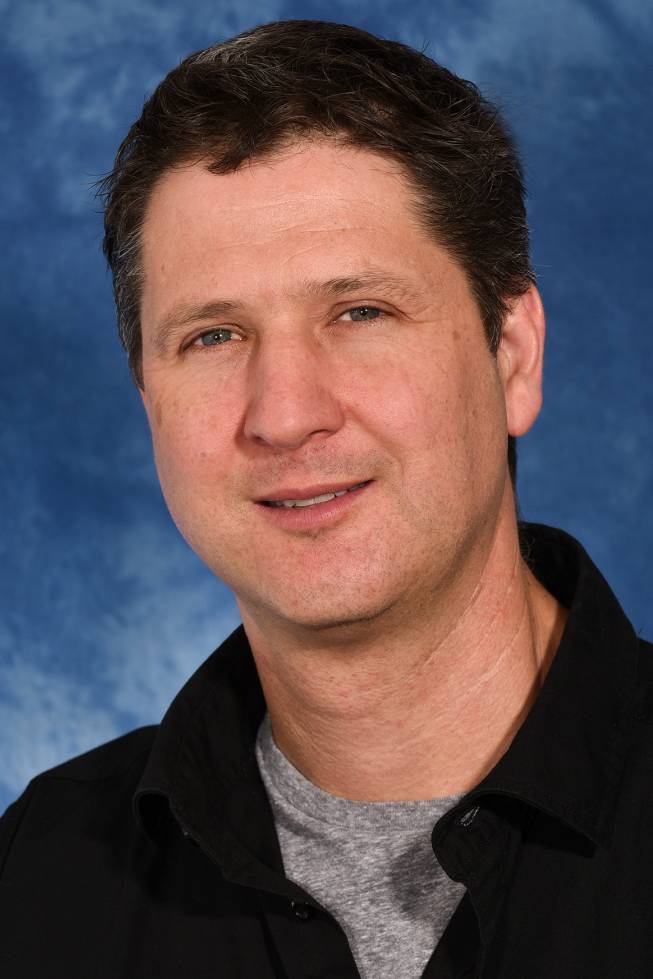
Tim Saltuklaroglu, PhD
Professor
Tell us about a research project you are working on now, a project you have previously worked on, or is there an exciting future project? And what do you want others to know about this research?
I am person who stutters, and my long-term research goal has always been to develop novel treatments for better alleviating stuttering. To this end, I have always been interested in understanding neurophysiological mechanisms of speech motor control that underlie stuttering. My colleagues, students and I have used electroencephalographic (EEG) measures in studies that have contributed to this understanding, uncovering differences in speech motor control between people who stutter and those who do not. Our current studies are examining novel EEG indices of movement precision in speech production experiments. If our hypotheses are supported and we find clear differences in these indices between individuals who stutter and those who don’t during speech planning, our findings may prove to be an important step towards developing novel neurostimulation protocols for treating stuttering.
So far in your research/clinical/professional career, what do you consider to be your greatest achievement or most interesting/surprising findings?
My colleague (Dr Ashley Harkrider) and I received NIH funding to investigate sensorimotor contributions to auditory discrimination in adults who stutter versus those who don’t. Our data were the first to show the time course of sensorimotor activity for speech discrimination in the two groups and identified differences in selective attention and working memory mechanisms between the two groups. We demonstrated that when those who stutter discriminate sounds in noisy backgrounds, they are less able to suppress the background noise and rely more heavily on working memory for accurate discrimination. These findings helped demonstrate that neurophysiological mechanisms involved in speech motor control also contribute to cognitive control, which also is impacted by stuttering.
What is the most important thing you have learned about having a successful research career in audiology, and what’s the best advice you can give to someone just starting their research career? I believe that to have a successful research career it is of utmost importance to establish collaborations with individuals who are similarly motivated yet can provide different perspectives and complementary skill sets to research projects. My advice to anyone beginning their research career in communication disorders is to begin to develop these collaborations as early as possible by networking and interacting with those who are already successful in the field. I would also suggest developing long term goals and completing small- and large-scale projects that will help achieve these goals.
Tell us something about yourself (a fun fact or hobby). My hobby is ‘doodling’.
I doodle as a mindfulness exercise to help with stuttering-related anxiety. It’s a hobby that allows me to relax, focus on the present and be creative without worrying about making a mistake. It gives me freedom to create and combine patterns in an infinite number of ways, which results in strange abstract artwork that my partner appreciates!
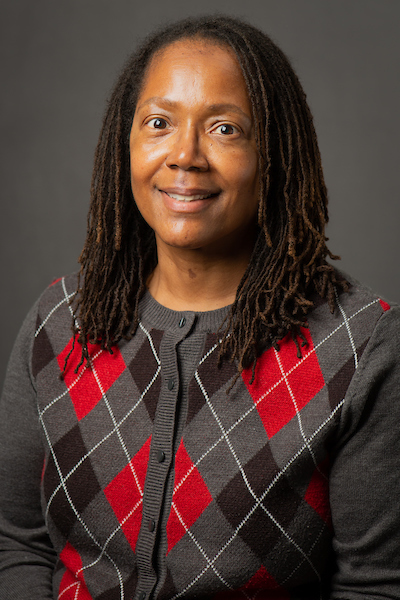
Pamela Lewis-Kipkulei
Associate Professor
Tell us about yourself and what attracted you to pursue a career in Occupational Therapy?
I am Pamela Lewis-Kipkulei, an Associate Professor in the Department of Occupational Therapy. My education includes BS in Occupational Therapy from Washington University in St. Louis (1992), Master of Science in Education from Harding University (2000), Doctor of Occupational Therapy from Chatham University (2007), and a PhD in Education from Walden University (2020). I practiced in Skilled nursing, facilities, early intervention, schools, rehabilitation hospitals, and rehabilitation management for 23 years. During this time, I also served as a clinical instructor for Level I and Level II fieldwork rotations. I began my career in academia in 2015 as an Adjunct Professor in the Doctor of Occupational Therapy Program at Arkansas State University and was hired as an Assistant Professor in 2016. I received tenure and was promoted to Associate Professor in 2022. I joined UTHSC in January 2023.
My research interests include both clinical and educational research. I am interested in increasing student engagement in the learning process, the Scholarship of Teaching and Learning, low vision, and the psychosocial aspects of occupational therapy service provision. My interest in research was piqued when I began pursuing my doctoral degree in Occupational Therapy and read several articles about the increasing lack of student engagement leading to poor clinical experiences and a lack of preparation for entry level jobs.
Tell us about a research project you are working on now, a project you have previously worked on, or is there an exciting future project you have plans for? And what do you want others to know about this research?
I am planning a project with one of my co-workers to look at the effectiveness of a volunteer OT community outreach on women in urban transitional homes in meeting their social, emotional, and life skill (occupational performance) needs. This is an exciting opportunity, and it will be a part of our evidence-based practice courses and our community mental health courses. This research is important because we are seeing an increase in the need for mental health interventions in many of our communities and populations.
So far in your research/clinical/professional career, what do you consider to be your greatest achievement or most interesting/surprising findings?
I was co-PI in a study that looked at the effectiveness of a hybrid curriculum on OT and Special education student engagement in a particular course. We implemented the hybrid curriculum for a semester and did focus groups to discuss the impact of the curriculum. I was surprised that the students in both classes really enjoyed the classes and wanted other classes to use this curriculum. I continued the curriculum in that course and each time I did, students reported that it really kept them engaged in the learning process.
What is the most important thing you have learned about having a successful research career in Occupational Therapy, and what’s the best advice you can give to someone just starting their research career?
I believe that the most important thing I have learned about having a successful research career in occupational Therapy is that research is vitally important to advancing the field and that there are so many areas where research can benefit and support current and future OT practice. Initially I was hesitant to get involved in research because I thought it was too hard and too time consuming but now, I really enjoy it. My advice is to not be afraid to get involved in research. Seek out partnerships with people who have similar research interests and work with them to create research opportunities.
Tell us something about yourself (a fun fact or hobby).
My husband and I discovered ziplining on a vacation several years ago, and now we try to find places to zipline on every vacation. We also enjoy hiking and plan to hike in at least one State Park in every state (we still have about twenty-five states left).
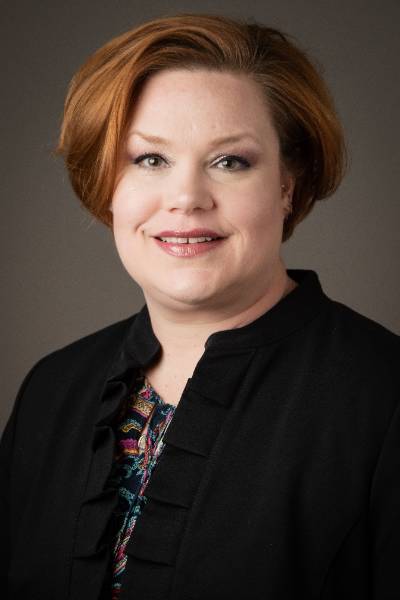
Tell us about yourself and what piqued your interest in your chosen field of research?
Hi! I am Shannon Hughes, an Associate Professor in the Department of Physical Therapy, COHP. I graduated from UTHSC in 2001 and I have 22 years of experience as a physical therapist. As a clinician, I practiced primarily in orthopedic physical therapy and I am a certified orthopedic specialist (OCS), a Certified Manual Therapist and certified in Functional Dry Needling. I completed my Doctor of Physical Therapy in 2007 and my Doctor of Education in Adult Education from University Memphis in 2017.
I teach in primarily the first and second year of PT education. I am in the orthopaedics pillar, as well as Gross Anatomy, Pathology and Imaging. I consider myself an educator first and a researcher way down the line in the things I do. My research so far as been related to education, admissions and dry needling. My interest in those topics has been because I am involved in all of those topics!
What recent research project have you been working on that you’d like to share with us? Tell us about your role in this study/project?
Lately I have been working with Campbell Clinic and the Biomedical Engineering Departments here at UTHSC and U of M on the muscle activation patterns post- Reverse Total Shoulder Arthroplasty (rTSA). This was a project I stumbled into because there was some difficulty identifying specific muscles in the shoulder. I had a novel way to do this using one of my clinical specializations, Dry Needling. I would stimulate the muscle in order to fire in its correct action to be able to identify it from surrounding muscles and then place fine wire EMG leads for the rest of the research team to be able to complete the study.
I also am part of a newly formed Education based research group in COHP. As a group, we are focused on advancing professional healthcare education research and connecting others interested in education related to professional healthcare education. One of our initial projects will be looking at Imposter Phenomenon in students in several of the professional healthcare programs here at UTHSC, with the hopes that we can expand and form collaborations with other colleges at UTHSC.
What do you want the public to know about your research? Why is your topic important?
In regard to the collaboration with Campbell Clinic, this research can be beneficial to physical therapists and other healthcare providers rehabilitating post-operative rTSA patients. It will help them know what muscles will be available to provide motion and power as well as which position the shoulder should be in to achieve those goals.
The Impostor Phenomenon project can provide insight into the mental health of students and some of the issues we may see in the classroom and during clinical experiences/fieldwork/internships with student performance. We hope to expand the study to not only look at students but also incoming faculty moving from patient care to academia. Hopefully this research can help identify coping mechanisms and ways to mitigate this issue.
What are the most interesting or surprising findings from your work so far?
The most interesting thing has to do with the rTSA studies. Analysis of the data shows some surprising muscle activation patterns that use muscles not intended for certain actions. It has also led to working with some really great researchers who are using these studies to develop more studies and they continue to want my assistance!!
What is your favorite part of your job?
My favorite part of my job is working one on one with students. I really enjoy the hands on laboratory part of PT school where the students learn the art and the science of physical therapy practice. Seeing the moment they “get” that missing piece of the puzzle that makes everything come together. Being able to observe their progress from first year DPT students when everything is really challenging to their third year, when the challenging part is the gray areas of concepts/diagnoses/techniques and there is no clear answer.
What is the most challenging part of your job?
The most challenging part of my job is the balance between teaching and all of the other requirements and responsibilities of being in academia. I don’t think that anyone really tells you about all of those other things that are part of this job.
What do you like to do outside of the lab? Do you have any personal hobbies or interests?
My lab time is not doing research- it is teaching!! Outside of time at work, I am a dog mom to two crazy pups that continue to get into everything even at 10 years old. I am getting ready for a trip to Europe in March and I looking forward to traveling more. I also love to draw, especially dogs. A good friend gifted me an art set in 2022 after listening to me talk about how I used to love to draw and paint. This reconnected me to this wonderful hobby and enjoy an evening or afternoon of losing track of time listening to audio books and drawing.
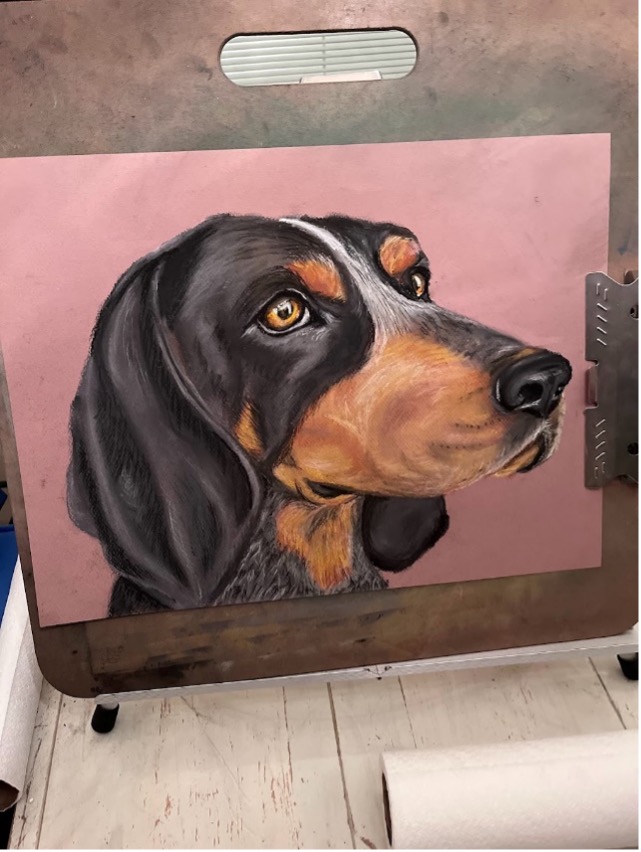
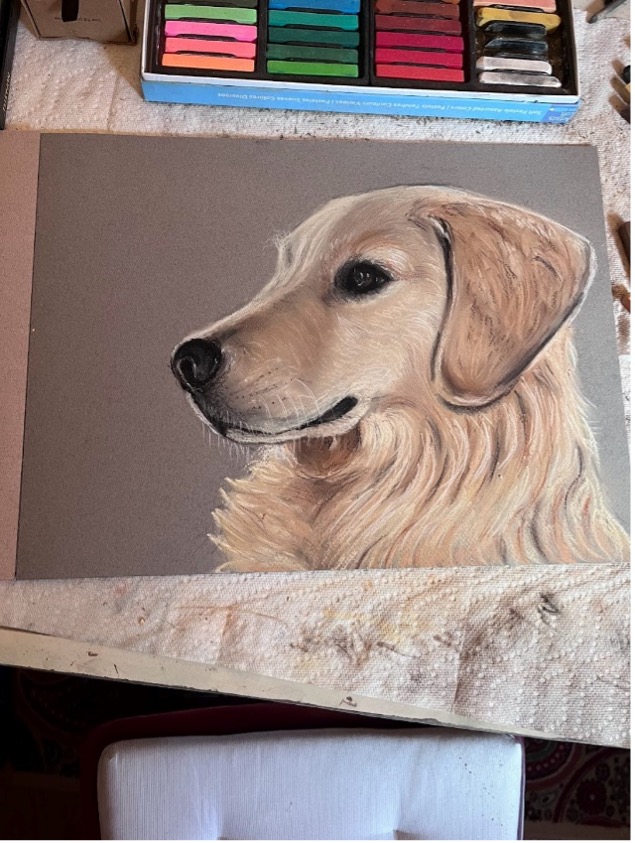

Sheila Criswell
Assistant Professor
Tell us about yourself and what piqued your interest in your chosen field of research?
I began participating as an adjunct faculty member at UTHSC in 2010 to teach the didactic histotechnology portion of the Masters of Cytopathology Practice (MCP) program. Prior to that time, I had worked in clinical practice as a cytotechnologist and histotechnologist. I received my master's degree in Clinical Laboratory Science later that year. In 2016, I became a full-time faculty member and have additionally taken on teaching 95% of the histotechnology curriculum as well as the hematology courses in the Medical Laboratory Science (MLS) program. I received my PhD in molecular/cellular biology in 2020 from the University of Memphis. Although my distribution of effort is weighted toward teaching, I enjoy working on research projects, primarily with students but also with fellow faculty members.
My research principally involves using various human, plant, and animal tissues to
answer questions involving protein expression, tissue components, and improvement
of technical aspects of laboratory work. I have always been inordinately fond of microscopy,
so my research typically involves some aspect thereof.
What recent research project have you been working on that you’d like to share with us?
We have had 2 publications in the last month. The first was with MCP graduate student, JoAnna Rudasill, where we evaluated various histochemical staining protocols for pathogenic fungi in humans.
A Comparison of Histological Staining Methods for Pathogenic Fungi in Humans
A second project with MCP graduate student, Levi Haven, evaluated the contents of canned cat food through histological methods.
Histologic Examination of Canned Cat Food
A longer-term project involving fellow Department of Diagnostic and Health Sciences faculty member Chelsea Peeler, MCP graduate student JoAnna Rudasill, former MLS and MCP student Amanda Bodkin, and former MLS student Danielle Grant, examines 200 gastric resection specimens to evaluate the prevalence of Helicobacter pylori infection, chronic inflammation, and mucosal thickness in the morbidly obese population in Memphis.
Projects begun this year include evaluation of the changes in cell subpopulations
within the pancreatic Islets of Langerhans in normal and diseased pancreata, a project
with MCP graduate student Anne Mones. In a separate but related project with MCP graduate
student Lindsey Wynn, we are examining the mast cell population in normal and diseased
pancreata. In a third project with MCP graduate student Angelin Shanmugam, we are
comparing the expression levels of epithelial proteins between squamous cell carcinoma
of the oropharynx and squamous cell carcinoma of the lung.
Tell us about your role in this study/project?
In most projects, I serve as mentor and co-investigator. Although some students join
investigations already in progress, most students choose an area of interest and I
assist in developing the project.
What do you want the public to know about your research? Why is your topic important?
The majority of our research focuses on improving laboratory technical processes or
elucidating disease mechanisms in the desire to minimize disease progression or to
provide potential targets for cancer therapy.
What are the most interesting or surprising findings from your work so far?
We work on a variety of topics and disease processes. I have to admit that there has
not been an investigation thus far which has not produced some interesting or unexpected
findings. Each project has afforded an enriching learning experience for me (and hopefully
for the students which whom I work).
What is your favorite part of your job?
There are a great number of things I enjoy about my job. It is very satisfying when
I am able to convey a difficult concept to students and realize that I have made it
understood. It is hugely gratifying when I challenge my students and they meet my
challenge and surpass my expectations. This past December evidenced a record-high
average histotechnology registry exam score in our program, over 150 points above
the national average for accredited programs. Student success is my success.
What is the most challenging part of your job?
Probably the most difficult part of my job is keeping my office and laboratory space
organized and tidy. Because of the numerous projects underway – either in experimental
stages or in manuscript writing and submission stages, there are constantly stacks
of materials around. However, twice per year, at the end of each semester, laboratory
and office contents are brought back under control.
What do you like to do outside of the lab? Do you have any personal hobbies or interests?
I enjoy reading and doing clinical work in a local hospital.
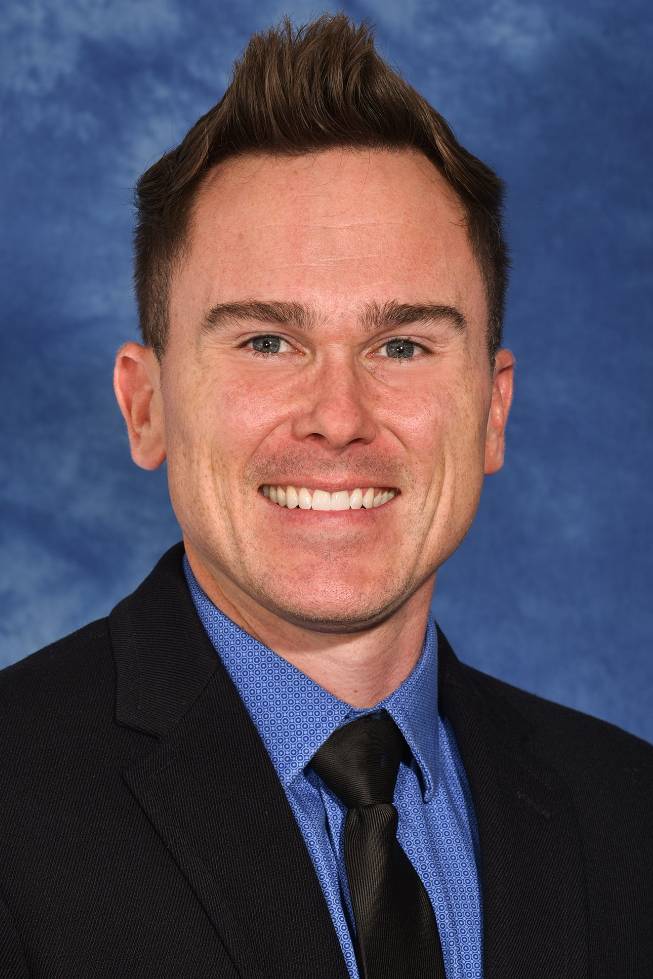
James Lewis, PhD
Associate Professor
Audiology and Speech Pathology
Tell us about yourself and what piqued your interest in your chosen field of research?
I first became interested in the ear and hearing during my senior year of undergrad in Biomedical Engineering. I was working on the development of an assistive listening device that would interface with cochlear implants. The device would give the user increased access to common sounds in the home, including the doorbell, telephone, TV, etc.. This experience led me to become an audiologist. During my clinical training, I became very interested in digital signal processing techniques and their application in the analysis of auditory evoked responses. This interest led me to an eventual PhD in Hearing Science with a focus on inner ear mechanics. I joined UTHSC in 2015 and have continued to study the human ear with an emphasis on physiologic factors underlying susceptibility to noise-induced hearing loss.
What recent research project have you been working on that you’d like to share with us?
My research program aims to reduce the prevalence and personal cost of noise-induced hearing loss by (1) advancing knowledge of the physiologic processes underlying an individual’s susceptibility to noise-induced hearing loss, (2) defining characteristics of compromised auditory processes stemming from acoustic trauma, and (3) developing clinical tools and intervention strategies to identify and remediate deficient processes, respectively. Recent work in my lab has focused on defining the process of spectral integration as performed by the human medial olivocochlear reflex. This reflex is thought to protect the ear against noise trauma. Majority of the noises we encounter everyday include sound energy that spans a wide range of frequencies. This type of noise is very effective in activating the afore-mentioned reflex; however, the effectiveness varies from one person to another. We are working to identify the sources of that variability and whether the variability may relate to susceptibility to developing noise-induced hearing loss.
Tell us about your role in this study/project?
I am the principal investigator on this project. However, I benefit greatly from the contributions made by the many students who have spent time working with me in the lab on this project.
What do you want the public to know about your research? Why is your topic important?
Recreational and occupational noise exposure poses a significant risk to human hearing. Loss of hearing can have a negative impact on an individual’s quality of life. I hope that my research can allow for identification of those individuals who are at greatest risk of developing new hearing loss. This would permit targeted intervention and, perhaps, reduce the incidence and prevalence of noise-induced hearing loss.
What are the most interesting or surprising findings from your work so far?
Recently we published a paper on a study investigating the potential relationship between a person’s noise exposure history and several measures of inner ear function. Our findings suggest a link between the two. It’s known that noise impacts the ear; however, what was surprising was that our study population was composed of very young adults who had mild noise exposure histories, most of which was incurred through typical recreational activities.
What is your favorite part of your job?
What I enjoy most about my job is teaching and interacting with our students, both in the lab and classroom. It gives me great joy when they succeed and achieve their goals. I also really enjoy creating new content for my classes, developing new analysis techniques, and writing papers.
What is the most challenging part of your job?
The most challenging part of my job is time management.
What do you like to do outside of the lab? Do you have any personal hobbies or interests?
My wife and I have 4 daughters between the ages of 8 months and 11 years. I enjoy being home with them and playing video games together. My wife and I play a lot of board games in the evenings and on weekends. I’m a fan of motorsport, especially Formula 1 and IMSA.
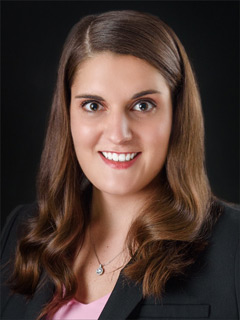
Elizabeth Tobener
Graduate Research Assistant
Audiology and Speech Pathology
Tell us about yourself and what piqued your interest in your chosen field of research?
My mom is a speech pathologist and had her own clinic staffed with occupational therapists and speech pathologists when I was growing up. Being exposed to patients of all ages going through rehabilitation and improving their lives really resonated with me and I knew I wanted to be in a field that could improve lives. My research field, vestibular science, seeks to improve balance for individuals.
What recent research project have you been working on that you’d like to share with us?
My current research project is looking at vestibular function in individuals with hearing loss. The inner ear houses both hearing and balance, but often those systems are considered separate entities. Research has suggested that if the hearing system is damaged then the vestibular system is as well because of the shared cells and physiologic processes. I hope to evaluate how that might affect an individual functionally.
Tell us about your role in this study/project?
This current project is the first one where I’m leading the charge to complete the project from start to finish.
What do you want the public to know about your research? Why is your topic important?
Vestibular science studies the vestibular system, which is vital to a person’s balance. My research permits me to look at current methods and disorders within this field and help to refine our knowledge of them. This is a passion of mine because no human being can live life if they can’t move around.
What are the most interesting or surprising findings from your work so far?
So far, the most interesting finding has been that age plays a huge role in vestibular function. Even if a finding is different from what is expected, it doesn’t necessarily mean abnormal function simply because you also have to consider the age of the individual.
What is your favorite part of your job?
My favorite part is getting to interact with my research participants. I have learned so much from them, both from the data they’ve given me and the conversations we’ve shared.
What is the most challenging part of your job?
The most challenging part is not always having an explanation for a finding. Sometimes it can be frustrating to have results and not understand why that result occurred.
What do you like to do outside of the lab? Do you have any personal hobbies or interests?
I love to read fiction novels! I also have an array of houseplants that I enjoy keeping alive. My outdoor hobbies revolve around my dog, Nala. She loves to swim and explore new places!
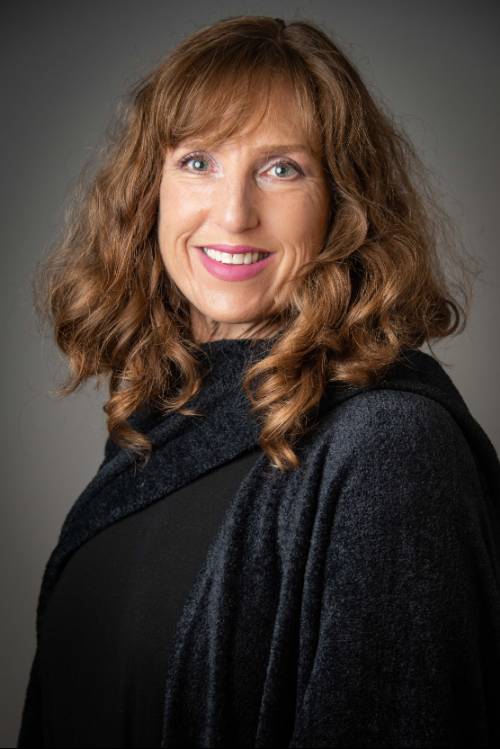
Orli Weisser-Pike, OTD, OTR/L, CLVT, SCLV, CAPS
Tell us about yourself and what piqued your interest in your chosen field of research?
I am an occupational therapist with an interest in vision and its impact on human occupation. Early in my career I focused on occupational therapy for adults and seniors with low vision, and started the first occupational therapy low vision rehabilitation clinic here in Memphis. I was fortunate to be recruited to the Hamilton Eye Institute, and through various twists and turns and a dose of good fortune ended up teaching full-time in the occupational therapy program in our college. In the past five years I have turned my attention to learning more about cortical or cerebral visual impairment (CVI) in children, which has more to do with the way the brain processes visual information. So in general, I have research questions related to the intersection of human occupation, the practice of occupational therapy, and vision.
What recent research project have you been working on that you’d like to share with us?
A few years ago, Dr. Lauren Ditta from the Hamilton Eye Institute invited me on a scouting trip to Kansas to learn about CVI from one of the leading ophthalmologists in the nation. Dr. Ditta was developing a keen interest in CVI and so was I. We both felt strongly that we needed to do more for these children. Our mutual interest in this field led to increased collaboration. She started referring more children from her clinic at LeBonheur to me for occupational therapy evaluations. I needed to know which occupational therapy assessments could be used in evaluating children with CVI and there was little information from within my own profession. This led me to doing a systematic review of assessments of CVI that are within the scope of practice of OT. I am still in the process of the review process. My goal is to submit a manuscript by the end of the year.
Tell us about your role in this study/project?
I am the primary author and investigator on this systematic review, since it was my question to begin with. I started the project with our previous health librarian, Leah Cordova, who has since left our institution. She helped me conduct the search. Thankfully, early on I was able to convince my mentor and now-retired colleague, Dr. Anita Mitchell, to help me with this study. She has been my anchor throughout the process. So even though I am the primary author, I couldn’t get through it without her knowledge and guidance. Earlier this year, I was able to present our initial findings at the World Federation of Occupational Therapy Congress, in Paris, France. This event takes place once every four years, so it was an honor to have our work selected for presentation at this prestigious event.
What do you want the public to know about your research? Why is your topic important?
CVI is thought to be the leading cause of visual impairment in children in the USA. CVI is perplexing, because it is not something that is visible to the onlooker. Many children can see but cannot organize, categorize, synthesize, and memorize what they are seeing. There are various degrees of severity of CVI. Sometimes, the difficulties that children have can look like negative behaviors. For example, children with CVI have difficulty looking at human faces and making eye contact. Most parents, educators, and even therapists may insist on the child making eye contact. They may interpret the lack of eye contact as disengagement, disinterest or lack of attention. Parents may think that the child does not love them or does not want to listen to them. What they don’t realize is that the child cannot synthesize and interpret what they are seeing—for example, the meaning of the facial expressions, the movements of the mouth synchronized with what they are hearing, and the meaning of the words and possibly the hidden meanings being conveyed. I always recommend to parents that they allow their child to look away while they are talking. Ask the child to look at them during the pauses or silences. It’s also very important that parents talk to their children. Just because the child can see, does not mean that they understand what they are seeing. Descriptive, narrative language is essential to children who have any kind of visual impairment. It helps give them a way to think about and process their visual experiences.
What are the most interesting or surprising findings from your work so far?
What is surprising to me is the lack of information about CVI within my profession. I’m also surprised at the lack of reliable and valid assessment tools for this population. Many of the instruments were developed in Europe and translated from one language to another without a validation study of the translated tool. I am learning a lot from Dr. Anita Mitchell about appraising studies and conducting a systematic review. It’s a lot of work.
What is your favorite part of your job?
I love all aspects of my job. It keeps me on my toes. I enjoy my interactions with the students and I am energized by their youthful ways. I am humbled by my clinical work—I am one of a handful of occupational therapists who are trying to promote and expand this area of practice. Because of my limited clinical time—only two clinic days per month—parents often wait a long time before they get to see me, and they come from other states too. That is very humbling, and gives me the drive to excel at what I do. The most challenging part of my clinical practice is that I don’t get to see patients on a continuing basis. It’s not an ideal process but it’s better than nothing.
What do you like to do outside of your job? Do you have any personal hobbies or interests?
I enjoy running and I try to run all of the half marathons in and around Memphis. On mornings that I don’t run, I enjoy other forms of exercise. I also enjoy arts and crafts. A few years ago I did a lot of sewing and beadwork.
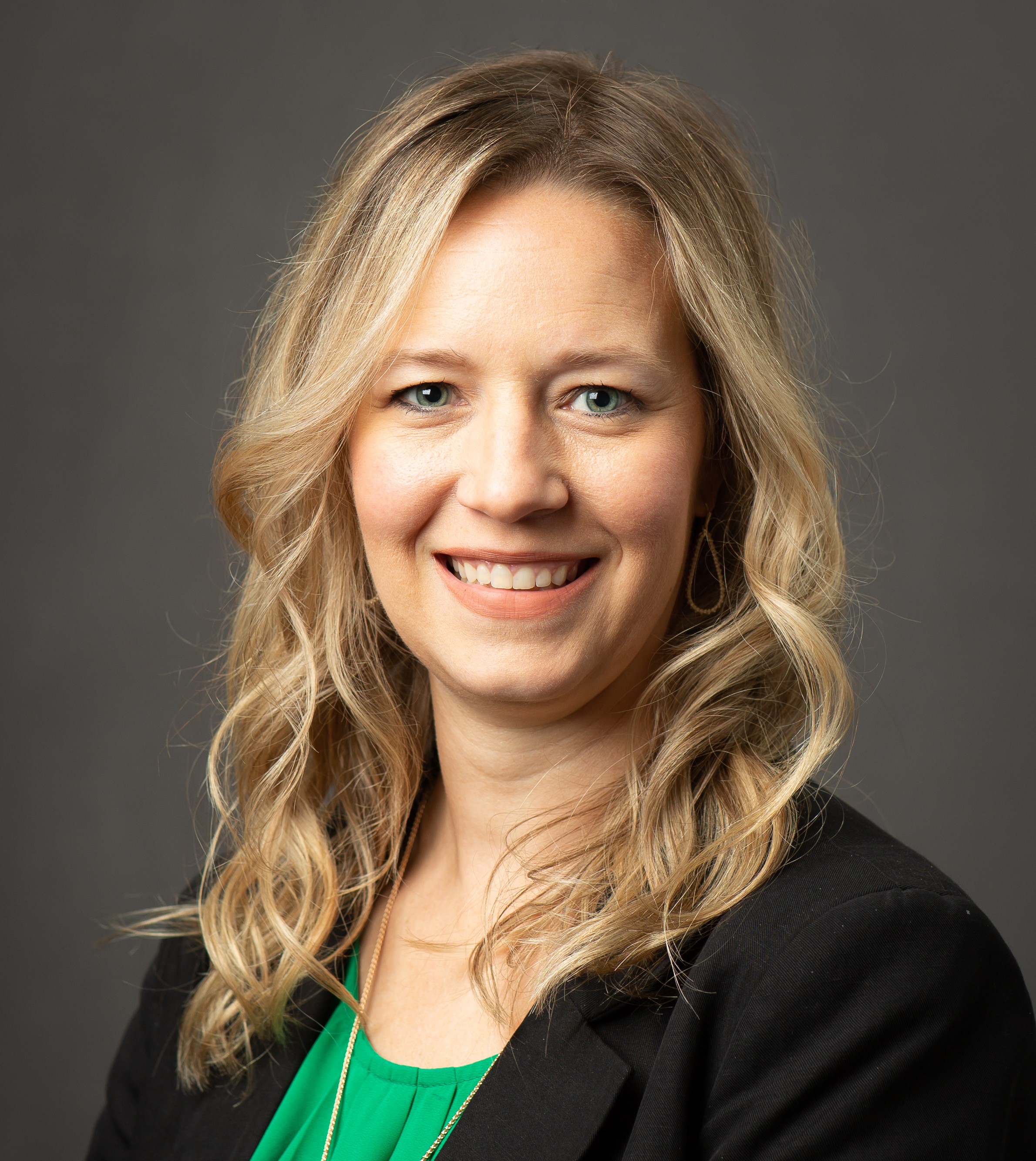
Jacque Bradford, PT, EdD, DPT, MS, CHSE
Tell us about yourself and what piqued your interest in your chosen field of research?
Simply stated, I am a physical therapist educator. My training began when pursing my undergraduate degree at the University of Memphis with a concentration on exercise and sport science. I enjoyed learning and studying the complexities of the human body and the impact of exercise. My fascination with exercise and the human body enticed me to explore research in this area while obtaining a master’s degree in human movement science. From there I went on to PT school. Post-graduation, I served as a clinical instructor for physical therapist students.
My experience serving as a clinical instructor introduced me to teaching. I deeply enjoyed working with student physical therapists and accepted a position in academia after 5 years of clinical practice. I had become comfortable teaching in the clinical setting as a physical therapist; however, I did not feel confident in my ability to teach effectively in the academic setting. I quickly enrolled in a doctoral program in instruction and curriculum leadership with a concentration in instructional design and technology. My EdD experience transformed me into who I identify as now, a physical therapist educator who enjoys the scholarship of teaching and learning. I am interested in education-based research topics such as simulation-based instruction, student learning outcomes, and faculty development.
What recent research project have you been working on that you’d like to share with us?
I recently completed a large research project with a group of astounding colleagues on defining simulation practices in physical therapist education in the U.S. supported by the American Council of Academic Physical Therapy (ACAPT). Our research examined the current practice of simulation in PT education programs and provided recommendations for excellence in simulation in physical therapy curricula. We conducted an expansive review of literature, deployed surveys to collect data on current practices of simulation, and developed recommendations to optimize the delivery of simulation-based education in physical therapist education.
What do you want the public to know about your research? Why is your topic important?
Great question! Simulation is an instructional strategy used to engage students in experiential learning experiences that are similar to experiences in the real clinical environment. The integration of simulation-based instruction in physical therapy education is becoming more common for multiple reasons; however, it is uncertain if simulation-based instruction is being delivered effectively in PT programs. Ineffective simulation-based instruction can result in deleterious effects on students, including not achieving the intended learning outcomes and the feeling of shame, embarrassment, humiliation, disengagement, and more. Our research serves to clarify the essential elements required to optimize the delivery of simulation-based education in physical therapy following simulation and education best practices, and recommends specific actions needed to address the many continued questions related to the effective use of simulation-based education in physical therapist education.
What are the most interesting or surprising findings from your work so far?
Based on our research study survey results, we found several interesting findings that informed the current practice of simulation in PT program curricula. Our data revealed that not all PT faculty who used simulation in their instruction followed published simulation best practices which could negatively impact the intended student outcomes. Our data also indicated that PT faculty completed little to no simulation training prior to incorporating simulation into their courses and of the training that faculty did complete, the majority was through their university or was self-taught. PT faculty responded that they predominately use simulation in their instruction to improve clinical decision-making or reasoning skills, self-efficacy, knowledge, and/or to participate in interprofessional activities with other healthcare professional students.
Our scoping review of the literature highlighted that of the 133 research articles identified in PT literature using simulation in the study design, the majority measured outcomes related to the lower two levels of Kirkpatrick levels of evaluation: reactions and knowledge. Kirkpatrick levels of evaluation range from low to high impact with the higher two levels, behavior and results, measuring whether the participants were truly impacted by the instruction (behavior) or the results were directly measured (results). The result of the scoping review informed us that there is a need for more research studies measuring higher Kirkpatrick levels to advance robust simulation practice in physical therapist education.
What is your favorite part of your job?
I’ll be honest, my favorite part of my job is working with our incredible PT students and witnessing their rapid transformation from their first day in the program to becoming licensed physical therapists serving patients in our community. I learn so much from our students daily, whether it be hearing the curious, deep questions they ask as we move through their instructional content or observing the passion they exhibit through student debates on current controversial topics in the physical therapy profession. I enjoy working with our students and encouraging their advocacy for our PT profession and for our patients. It is through evidence-based research that excellence in our practice is defined and supported, and through evidence-based literature that our students learn to justify their clinical decisions and treatment rationales in effort to provide quality care to patients. Research defines how we practice in our profession and also how we can effectively teach our future generation of physical therapists. I am proud to be a part of the educational process for our profession.
What do you like to do outside of your job? Do you have any personal hobbies or interests?
Outside of work, I like to stay active. Keeping active and exercising not only supports the health and well-being of our bodies, but it also supports our mind, attitude, and mood. I enjoy spending time with my family and friends, attending my children’s sporting activities, throwing the Frisbee with my dog, Vader, lifting weights, cooking, and traveling. One of my newest hobbies is joining our Office of Access and Compliance Book Club At The Center.
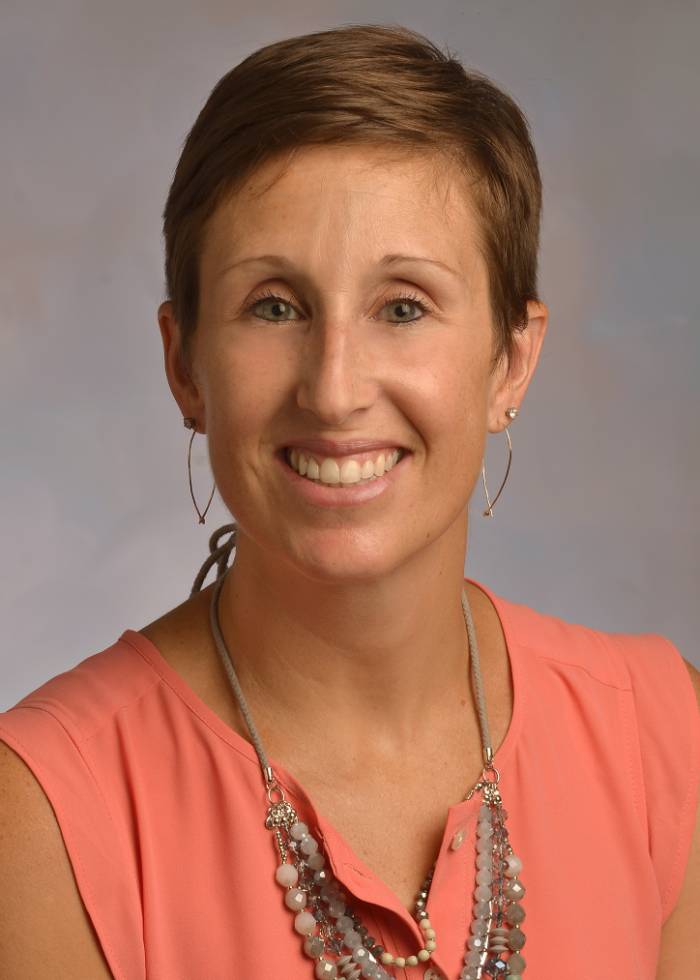
Erinn Finke, PhD, CCC-SLP
How did you become interested in social and friendship interventions?
Before attending Penn State for my Ph.D. program, I worked as a speech-language pathologist in a school context. During this time, I learned how important it is to families that their autistic children have a solid, reliable, and strong social network that includes “real” friends. I also began to realize that teaching social skills was good, but it most definitely was not enough to meet this goal. As a doctoral student, I began to think about the characteristics of a desirable play partner. At the time I thought peer-mediated interventions involving autistic and non-autistic children would be the best solution, which is the perspective from which I designed my dissertation project. Over time, my thinking about friendships and social interventions has evolved, and my current line of thinking has resulted in a proposed reconceptualization of how we think about friendship-based outcomes (Finke, 2016).
In this paper I proposed several factors that seem likely to offer the most optimal context for autistic children to make friends. Specifically, I believe we need to seek contexts for friendship formation in which the autistic children and their peers can obtain equal status, engage in a mutually motivating authentic activity or interest, and have repeated opportunities to interact positively with each other. Since writing this paper in 2016 I have collected new data from autistic and non-autistic young adults asking about their friendship preferences and how they want to be as a friend. The outcomes of these studies showed that though there are some differences in the preferences and practices of autistic and non-autistic people at the group level, these are not absolute and congruence in preferences and practices is really the primary factor that will support friendship formation and maintenance.
What recent research project have you been working on that you’d like to share with us?
I have several ongoing research projects in my lab related to autistic friendship. All of them are collaborations with scholars in other universities or with autistic people themselves. One project that I am finding fascinating is investigating the experience of authentic autistic friendships from the perspective of the people within the friendship. My research collaborator and I are interviewing autistic friends and asking about how they became friends and what they do to maintain their friendship over time. We also ask them about hypothetical situations and potential friendship barriers. During these interviews the friends collectively provide responses to how they would overcome those challenges in their friendship to keep the friendship going over the long term. We have interviewed dyads who have been friends for years as well as new friends and the responses have been so illuminating. There is so much joy in friendship and it is exciting to witness flourishing autistic friendships. We are excited to be able to publish the results and share these experiences with people all over the world.
I am also interested in learning more about contexts that support friendship formation, especially at critical developmental junctures, like the beginning of middle school. Building on the principles advocated in my 2016 paper, I am currently working on a team of researchers from Boston University and James Madison University to establish after school video game clubs at middle schools as a method for creating opportunities for kids with a shared interest in video games to come together to potentially develop connections and friendships. The after-school programs will be initially opened to a set number of autistic and non-autistic 6th graders in all three locations (MA, VA, and TN) as a pilot. Based on the results of the pilot, the program will eventually be expanded for all middle school students who would be interested in the club. The intent is to provide a place where autistic and non-autistic tweens can be their authentic selves and feel a sense of belonging, and hopefully establish new friendships.
Tell us about your role in the project.
I am a lead investigator for both projects and have primary responsibility for the conceptualization, development, and execution at every stage of the research process.
What do you want the public to know about your research? Why is your topic important?
Ask anyone, whether they have a disability or not, what makes their life good and one of the top things they will say is their friendships. We all want to belong to other people; it is core to the human experience. This is no different for autistic people than for anyone else.
For years autistic people have been telling researchers for years about their experiences making and maintaining friendships (e.g., Daniels and Billingsley, 2010; Vine Foggo and Webster, 2017). The challenges in making and maintaining friendships appear to be different for boys and girls. Autistic boys have reported it is difficult for them to choose a potential friend candidate and make initial advances to establish new friendships (Daniels and Billingsley, 2010). Autistic girls report social interaction is important to them, but difficult because they often feel the need to mask their autistic characteristics to fit in. They have reported they find it exhausting to constantly remain neutral to avoid conflict with their friends because conflict could result in friendship termination (Vine Foggo and Webster, 2017).
Where I am with my thinking about this area of research right now is that instead of focusing on the social deficits of autistics, and the skills they need to learn in interventions, we should focus on the friendship preferences and practices of autistics. In this way, the focus is directed at how autistics want to conduct their friendships and behave as friends rather than on the differences in the ways autistics think and behave compared to their non-autistic peers. Using this perspective, the focus becomes understanding more about what each autistic person wants for themselves and less about helping the autistic person fit into non-autistic norms and practices for friendship
What are the most interesting findings from your work so far?
We know that autistic people want to have friends. Most autistics have reported they have at least one friend (Mendelson et al., 2016), and many have reported a desire for even more friendships than they currently have (Finke, McCarthy and Sarver, 2019). One potential explanation for why autistic people are not satisfied with their current friendship outcomes is emerging evidence of a lack of congruence in the friendship preferences and practices between autistic and non-autistic people (Finke, et al., 2019; Finke, 2022).
Congruence, that is, similarities in perspectives and beliefs particularly with respect to how to be a friend and act in a friendship, is important to friendship intensity and longevity. Research (Finke, et al., 2019; Finke, 2022) has demonstrated that autistic people want to have friends, they want to have more than one friend, they have preferences about how those friendships be constructed, and how they want to act as a friend. Autistic people report they would generally prefer less physical and emotional closeness in their relationships. Autistics also report a preference for being friends with people who share similar interests, that is, with people with whom they would have things to do. Autistics have stated they do not overall value having deep conversations or structuring interactions around talking.
This research offers a potential explanation for the higher proportion of autistics who report being friends or wanting to be friends with other autistics (e.g., Bauminger and Shulman, 2003; Cook et al., 2018). Autistic young adults have a higher likelihood of having congruent perspectives and preferences in friendships with other autistics than with their non-autistic peers. This information can be extremely helpful in guiding SLPs, teachers, parents, and others involved in the daily lives of autistic people in creating opportunities for interactions with others on the spectrum.
What is your favorite part of your job?
Getting to be creative and think of new projects to move the field forward. Thinking about questions to answer and how my work can support autistic people in having the lives they want. Trying to figure out how my work can show the world that autistic people can and should make decisions for themselves, especially with respect to how they construct their social lives and relationships.
What do you like to do outside of the lab? Do you have any personal hobbies or interests?
Yes, definitely! I have a lot going on in my personal life that does not involve my job. I have a family and busy kids who are in the thick of growing up and becoming the people they are intended to be. I love supporting them in pursuing their passions and interests. Most weekends you can find me cheering at a swim meet or a hockey game. I also enjoy reading novels and crocheting. I am a creator at heart, so I am interested in all things artistic and creative.

Jacen Moore, PhD, MA, MT (ASCP)
Tell us about yourself and what piqued your interest in your chosen field of research?
I have been interested in clinical science from a very young age. My life experiences with family and friends drove my specific interest in human Immunology and Autoimmune diseases. One of my Grandparents, who passed away young from complications pertaining to Rheumatoid Arthritis, and a high school friend who passed away due to renal failure caused by childhood Systemic Lupus Erythematosus motivated me to better understand the pathogenic mechanisms of autoimmunity and to identify ways to diagnose and treat autoimmune diseases. Much of my experience prior to coming to UTHSC focused on bench research in these areas. It wasn’t until after I spent time on the clinical bench as a transplant technologist and a number of years as a faculty member in Medical Lab Science Programs that I became passionate about promoting our field and creating pathways for high school students to learn about and pursue careers in lab science to make a greater impact in public health. That is what led me to my current research focus, which is creating training programs for high school teachers and students in rural areas that are focused on educating these populations about lab and data science careers, and to encourage high school students to consider these lesser known health care careers as long term professional options.
What recent research project have you been working on that you’d like to share with us?
Drs. Reynolds, Burnett, and I recently received a $1.3 million dollar grant from the National Institutes of Health SEPA program to create an educational program in Rural West Tennessee promoting lab and data science careers. To accomplish this, we proposed to create dual enrollment and summer programs providing lab and data science curricula to high school students and professional development offerings to teachers exploring these fields. We are extremely excited about this program, called High School to Health Care (HS2HC). We believe that it will provide a mechanism for rural high school teachers and students to learn about our professions, have an opportunity to explore what these professions have to offer, and for us as faculty to go out into the community and promote UTHSC and lab and data science. This project also gives us a chance to establish connections and working relationships with peer institutions in the State of Tennessee, as we have established collaborations with staff and faculty from the University of Tennessee at Martin, the extension Centers at Ripley and Selmer and with staff at the University of Memphis.
Tell us about your role in this study/project?
I am the principal investigator and program director on the project. My role involves being a leader on the project, working with other key personnel, collaborators, and institutions to accomplish our overarching goal of introducing lab and data science professions to Rural West Tennessee high schools and promoting these health professions as valuable and crucial members of the health care team. Not only will I be responsible for working with my team to design the program, developing and delivering curricula, but I will also be involved in recruiting students and teachers, community outreach, and dissemination of the work that we do.
What do you want the public to know about your research? Why is your topic important?
Lab and data sciences are two of the fastest growing professions in the health field. We need to find new and innovative ways to promote and educate students and the public about our fields to meet the increasing demand. Grants and programs like ours are one critical way that we can do our part to address the shortage of qualified lab and data science professionals and create a pipeline of students that may enter the lab and data science professions. Furthermore, we hope that our community outreach can improve health literacy in rural areas of West Tennessee and beyond.
What are the most interesting or surprising findings from your work so far?
We have just gotten started on our project and received funding, so we are very excited to get the project moving forward. This fall, we are offering our Dual Enrollment program Introducing Lab and Data Science to High School students enrolled for college credit for the first time online at the University of Tennessee at Martin. We were extremely pleased that we had four students enroll for our first course!
What is your favorite part of your job?
I believe that the best part of my job is working face to face with the students. I love being able to work with them hands-on in the lab and to see them achieve that moment of understanding when they are working on a technique or problem in the classroom. I also really enjoy working with students to get their technical writing assignments published. Recently, I was able to get an article pertaining to COVID-induced coagulopathy published with one of our recent MLS graduates. Seeing the impact on students of getting their work published in peer-reviewed journals is priceless and is definitely one of the best parts of this job.
What is the most challenging part of your job?
I think the most challenging part of my job is spending so much time behind a computer screen. I really enjoy the time spent in the laboratory face-to-face with our students. What makes the time behind the computer tenable for me is that I realize how important it is to work hard to develop cutting edge curricula that we can share with our students so they can provide quality health care for our communities upon graduation.
What do you like to do outside of the lab? Do you have any personal hobbies or interests?
I am particularly interested in medieval history, medicine, and crafts and I love reading about and watching documentaries discussing Tudor history and aspects of medieval life and times. I am a huge fan of English historians Lucy Worsley and Susannah Lipscomb and follow many of the documentaries they have produced about the Royal palaces, courts, and historic English royalty like Henry VIII and Elizabeth I. I enjoy working with my hands and like to be creative doing activities like leatherwork, making jewelry, creating and binding homemade books, and cooking. I also enjoy traveling when I can and I am an avid Walt Disney World fan.

Tell us about yourself and what piqued your interest in your chosen field of research?
I am an occupational therapist with a history of working in inpatient and outpatient rehabilitation as well as the public school system. My doctorate is in Educational Psychology. I am interested in a variety of areas of research including resilience and coping, traumatic brain injury, pediatrics, and teaching and learning.
What recent research project have you been working on that you’d like to share with us?
I am currently the primary investigator in a project looking at ways to better engage students when teaching theory. In the past couple of years, I have co-authored several articles in multiple peer reviewed publications. My article in the Journal of Occupation Therapy Education related to epistemic and ontological cognition in occupational therapy students during their didactic and fieldwork experiences.
Additionally, I published two articles in the Journal of Occupational Therapy, Schools and Early Intervention. The most recent was related to parental perceptions of barriers to implementation of tummy time with infants. The other article looked at parent perception of competence related to school preparation for the children after participation in a brief kindergarten readiness workshop.
What do you want the public to know about your research? Why is your topic important?
I love learning and want to be the best instructor I can possible be to my students. I also feel that it is important to continue to develop my skills as a researcher. I would like to contribute to evidence to base the field of occupational therapy while also exploring best practices for educating future practitioners.
What are the most interesting or surprising findings from your work so far?
This is a difficult question to answer because my research topics have all been so different. I think the most interesting findings would be the factors that positively impact the resilience of caregivers and individuals with traumatic brain injury because I can see the connection between factors that foster resilience to individuals dealing with struggles in all walks of life. It is helpful for me to keep in mind when working with students from various backgrounds and when teaching them to work with clients who have experienced loss and trauma.
What is your favorite part of your job?
My favorite part of my job is having the space to explore my interests while sharing my knowledge with future practitioners.
What is the most challenging part of your job?
The most challenging part of my job has been finding the time and space to collaborate with professionals in other colleges. I feel this is because I began working at UTHSC in April 2020.
What do you like to do outside of the lab? Do you have any personal hobbies or interests?
When I am not completing tasks for work, I enjoy riding my bike, kayaking, seeing live music, cooking, and making mosaics.

Blake Rafferty
PhD Student in Speech and Hearing Science
This month we sharing profiles on a few of our amazing PhD students and their current research studies.
Tell us about yourself and what piqued your interest in your chosen field of research?
I’m a fifth year PhD student in Speech & Hearing Science. My research uses EEG to study how the human brain represents linguistic information during language comprehension. Recently, I’ve focused this work on investigating how these processes are disrupted in individuals with post-stroke aphasia.
I first got interested in studying language in general during my undergraduate degree in anthropology. My advisor was one of just a handful of Americans who spoke the language of this tiny nomadic people group in northern Mongolia, and his stories always emphasized how people around the world can use language to conceptualize their experiences in wildly different ways. I basically flipped that idea around and applied it to studying communication disorders in grad school, with the goal being that the research I do might help to rehabilitate someone who has lost their ability to communicate those central parts of themselves and their experiences.
What recent research project have you been working on that you’d like to share with us?
I’ve recently been developing my dissertation project, where I’m hoping to record the brain activity of individuals with aphasia and to investigate how it relates to their ability to understand grammatically complex sentences, which are generally quite difficult for them. It’s a really neat project because the analysis I’m hoping to use should allow me to evaluate several of the major competing theories for aphasic comprehension simultaneously, which hasn’t been done before using a time-sensitive neuroimaging measure like EEG.
Tell us about your role in this study/project?
Since it’s my dissertation work, I’ve been leading all aspects of the project’s theoretical conceptualization and design, with a lot of helpful input of my academic committee as well. I’ve also been collaborating with some great speech-pathologists to develop some practical long-term goals for the project to keep it clinically grounded.
What do you want the public to know about your research? Why is your topic important?
My area of research is important because it increases understandings of the functional causes underlying the difficulties experienced by people with aphasia. My hope is that future work will be able to take my findings and use them to develop better-focused treatment approaches for language rehabilitation for these individuals.
What are the most interesting or surprising findings from your work so far?
From my work with healthy adults, I have found that the brain seems to build up sentences incrementally, based on whatever information is available in the speech input at a given time, even if the initial representation is somewhat inconsistent with the way the sentence should eventually be interpreted when it’s finished. If my interpretations are correct, this is an intuitive way for language to work, since speech input is really fast but is still encountered one word at a time. This finding was somewhat surprising though, because it is not entirely consistent with many traditional theories for how language processing works.
What is your favorite part of your job?
I love data collection and analysis, and I love working with others to conceptualize/design experiments. Getting to do those things within a healthcare setting, where everyone’s goal is to help people is fun and rewarding.
What is the most challenging part of your job?
Writing is tough. EEG data analysis can also get complicated quickly because there are many, many data points.
What do you like to do outside of the lab? Do you have any personal hobbies or interests?
My wife and I try to travel any time there is a break from school. I also really enjoy trail-running and playing guitar. Both are really cognitively engaging for me, which is great because I can be fully, mentally present in something that is totally separate from my research. It’s great for giving my brain a break and helping me check back into life outside of the lab.

Genevieve Lambert
PhD students in Integrated Biomedical Sciences
Tell us about yourself and what piqued your interest in your chosen field of research?
My name is Genevieve Lambert, and I am a second-year student in the Integrated Biomedical Sciences PhD program, more specifically in the Rehabilitation and Regenerative Sciences track. I received my bachelor degree from the University of Montreal (Canada) in Kinesiology and my master degree from McGill University (Canada) in Experimental Surgery.
Over the past 5 years, I have worked in clinical research with pediatric cancer patients and survivors, and with adult cancer patients. The projects I worked on were prehabilitation and rehabilitation interventions designed to improve functional and physiological health in patients and survivors.
My vocation in the field of pediatric oncology research is inspired by a childhood friend that battled Ewing sarcoma. However, my passion for research has been cultivated by many encounters with great researchers that have mentored me, in addition to every patient I had the chance to work with.
Therefore, I will be doing my thesis in the field of childhood cancer under the supervision of Dr. Kirsten Ness. My topic of interest is immune function in childhood cancer survivors and its impact on recurring infection and inflammation.
What recent research project have you been working on that you’d like to share with us?
Lately I have been working on a systematic literature review on the topic of: “Infection and Immune Functions in Childhood Cancer Survivors”. This project aims to review and summarize the literature describing infection and immune function in childhood cancer survivors.
Tell us about your role in this study/project?
With the support of Dr. Kirsten Ness and Dr. Chelsea Goodenough at St. Jude Children’s Research Hospital®, I have created a protocol for a systematic literature review and have started the process for registration.
What is your favorite part of your job?
My favorite part of doing research is doing the statistical analyses and getting the results. I think that part of the research process feels like assembling the pieces of a puzzle and seeing the image come together.
What do you like to do outside of the lab? Do you have any personal hobbies or interests?
In my free time, I like to play with my dog, do arts and crafts and physical activities.
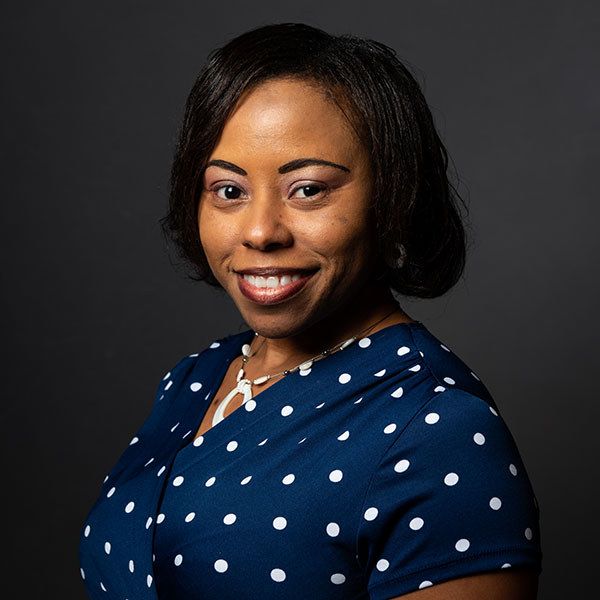
Tell us about yourself and what piqued your interest in your chosen field of research?
I am LaToya Green, an Assistant Professor in the Department of Physical Therapy. I received the following degrees: BA in Psychology from Tougaloo College (1994); Master of Physical Therapy from Arkansas State University (2004); Doctor of Physical Therapy from Arkansas State University (2015); and Doctor of Education in Higher Education from Union University (2019). I practiced in the outpatient physical therapy clinics at Baptist Desoto for 10 years. While at Baptist Desoto, I was a clinical instructor for nine years. I thoroughly enjoyed teaching and transitioned to academia full time in 2015. I began my career in academia as an Assistant Professor in the Doctor of Physical Therapy Program at Arkansas State University. In 2019, I became the Director of Clinical Education at Arkansas State University. I joined UTHSC in August 2021.
I am active in educational and clinical research. My curiosity in educational research was piqued when I began pursuing my doctoral degree in higher education. My interest in clinical research (blood flow restriction) was ignited by one of my mentors, Dr. Roy L. Aldridge, and other clinical research interests (prosthetics, orthotics myofascial release, etc.) were sparked by courses I taught at Arkansas State University.
What recent research project have you been working on that you’d like to share with us?
With regards to educational research, I am currently working with colleagues at Arkansas State on a Socratic method approach for increasing and maintaining safe spaces to develop cultural intelligence and cultural competency within Athletic Training, Occupational Therapy, and Physical Therapy programs. With regards to clinical research, I am currently assisting colleagues at Arkansas State with a study on blood flow restriction BFR) and myofascial release (MFR). The purpose of this study is to assess strength gains of the pectoralis major muscle in the non-dominant upper extremity after implementing BFR and MFR. I am also assisting Dr. Phyllis Ritchie with the Powered Ankle-Foot Orthosis PAFO) study to determine if exchanging a typically prescribed Ankle-Foot Orthosis AFO) for a PAFO will provide a suitable alternative and improve functional performance, ambulatory ability, safety and quality of life for veterans using AFOs.
Tell us about your role in this study/project?
I am a co-PI in the educational research study and BFR and MFR study. I am the Evaluation Physical Therapist in the PAFO study.
What do you want the public to know about your research? Why is your topic important?
From the educational research perspective, I would like health care educators to realize that it is vital that difficult topics, such as cultural competence, are introduced in the classroom so that students are better equipped to understand and address situations presented by a diverse patient population. From the clinical research aspect, I would like the public to know that BFR is a treatment option for certain candidates to gain strength in the upper and lower body without overloading and overstressing the joints.
The traditional Ankle Foot Orthosis AFO), often prescribed for people who have lower-limb impairment resulting foot drop, has not had any major innovation for over 30 years. That type of orthotic brace generally prescribed for foot drop holds the ankle in a relatively fixed position when a step is taken, which alters the normal walking pattern, throwing off balance and increasing the risk of falling, compared to those without foot drop. The innovative design of a Powered Ankle Foot Orthosis PAFO) allows the affected ankle to move, both lifting the toe and providing push-off as steps are taken.
We are interested in seeing if we can not only improve the quality of movement, but also bring about meaningful changes in overall patient function through the use of technology that is often not available to patients suffering from foot drop. Additionally, in terms of positively impacting long-term quality of life for foot drop patients, we are interested to know if a device like a Powered Ankle Foot Orthosis PAFO) could actually improve long-term function, and potentially carry over to when the device is not being worn.
What are the most interesting or surprising findings from your work so far?
Although the educational study has not been implemented, it has been quite challenging for me to design a Socratic method approach for increasing and maintaining safe spaces to develop cultural intelligence and cultural competency.
What is your favorite part of your job?
The favorite part of my job is implementing the research.
What is the most challenging part of your job?
Recruiting subjects is the most challenging part of the job.
What do you like to do outside of the lab? Do you have any personal hobbies or interests?
I enjoy spending time with my family and friends and traveling.
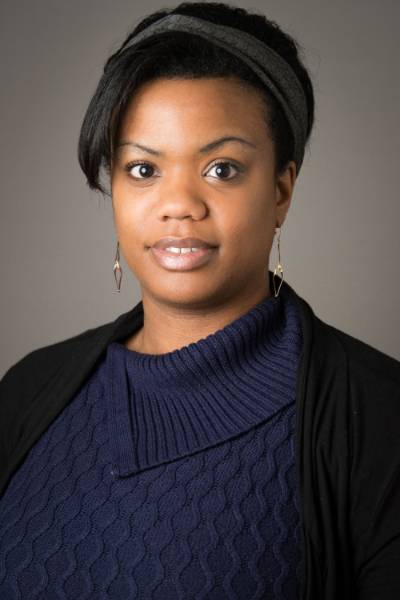
This month's Researcher Spotlight is feature Charisse Madlock-Brown, PhD, MLS. Dr. Brown has been a faculty member at the UTHSC College of Health Professions Health Informatics and Health Information Management since early 2015. She received her Master’s in Library Science and Ph.D. in Health Informatics from the University of Iowa. She has expertise in data management, data mining, and visualization. She has a broad background in health informatics, and has has authored several book chapters and journal articles.
What recent research project have you been working on that you would like to share with us?
I have a couple of different projects I have been working on, but recently I have
been working with the National COVID Cohort Collaborative (N3C). The N3C is a partnership
among the National Center for Data to Health and National Center for Advancing Translational
Sciences supported Clinical and Translational Science Awards CTSA) Program hubs. The
idea for it is to create a large scale repository of millions of patient records from
institutions all over the country. It's also a collaborative platform, which makes
it so much easier for researchers. Even if you a researcher doesn't have a lot of
resources, or you can still access the data and contribute be a part of research teams.
Tell us about your role in this study/project?
As part of the N3C project, I am the co-lead for the Social Determinants of Health (SDoH) team. The team’s goal is to identify questions that either validate current research or answer new questions for local policy around COVID-19, the impact of groups experiencing resource challenges, and the impact of the pandemic on inequalities. I've been the team co-lead for the past two years.
What is something interesting or surprising from your long COVID research so far?
Eventually, the idea is to characterize the subtypes of long Covid that health care providers should expect to see in their clinics. So far, the data has revealed at several clusters of co-occurring diagnosis in long-Covid patients, including cardiopulmonary, neurologic, and metabolic diseases. It is all still preliminary, but we are seeing these kind of patterns emerged that were very much in line with what many of our long COVID clinicians were seeing and this review of the data is helping us validate this.
We have been able to see some patterns emerging from the data. Different things like the 65+ age group presented with diseases associated with aging like heart failure and atrial fibrillation, and then for the youngest group, there's a multi-system inflammatory syndrome. All of this data gives us much more to explore.
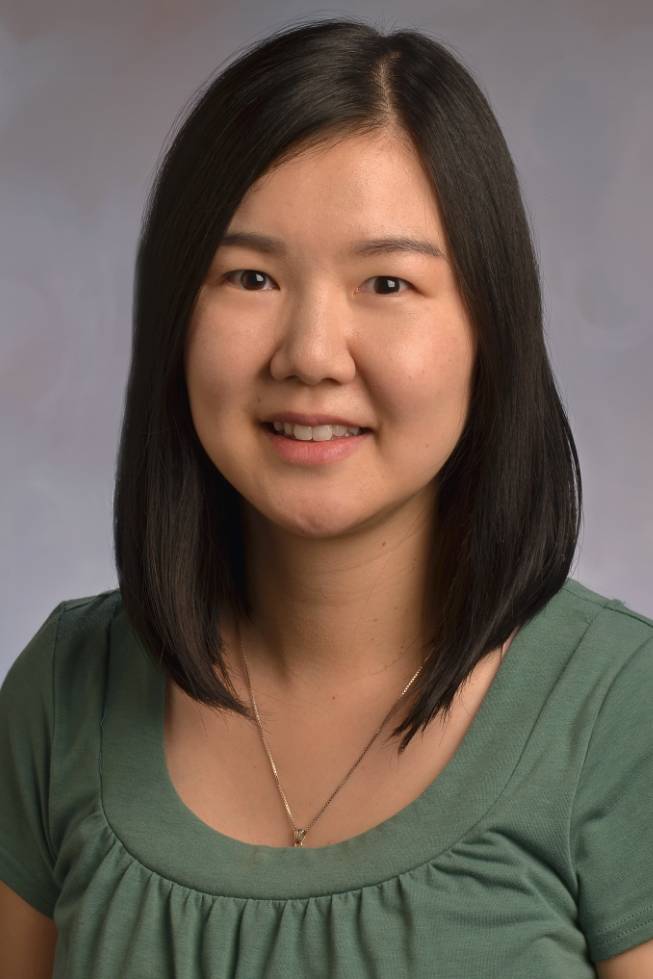
Tell us about yourself and what piqued your interest in your chosen field of research?
My name is Eun Jin Paek and I am currently in my fifth year of being an Assistant
Professor in the Department of Audiology and Speech Pathology. My research focuses
on acquired neurogenic language disorders including neurodegenerative diseases such
as Alzheimer’s disease, primary progressive aphasia, and post-stroke aphasia. When
I majored in Linguistics during undergrad, I took a course on Speech Pathology and
was fascinated by the fact that brain disorders can affect language processes so substantially.
I chose Speech Language Pathology for my graduate study and was incredibly lucky to
land a job as a Speech Language Pathologist in university hospitals. Here, I had the
opportunity to evaluate and treat thousands of patients with neurological disorders
in all stages. In addition to this, I had personal experience seeing family members
with dementia, which further drew me to dementia research. Today, I am using fMRI scans
to help identify neural and behavioral characteristics of dementia and aphasia and
find management strategies to help patients cope with these conditions.
What recent research project have you been working on that you would like to share
with us?
For my most recent project, I am investigating social communication abilities in people
with Alzheimer’s disease and related dementias. I am studying how people with dementia
communicate with different partners (familiar people and strangers) and how they use
their language in various contexts over time. There is limited research on what people
with dementia can and cannot do in terms of social communication, so this project
will hopefully shed light on how we could better communicate with dementia patients.
I was fortunate to be funded by the National Institute on Aging for this study and
have begun to collect data on cognitive, linguistic, and gestural characteristics
of social communication in this population. After a bit of a delay due to the pandemic,
I am excited to start data collection on this important topic.
Tell us about your role in this study/project?
I am the principal investigator of this project, and I’m responsible for every aspect
of it. I have worked on conceptualizing, designing, and conducting the study protocol.
I also work with research assistants to train and supervise them. As principal investigator,
I will also analyze and disseminate the results.
What do you want the public to know about your research? Why is your topic important?
Social communication is one of the most important aspects to study for early detection
and management of dementia. This is because people with dementia begin showing subtle
cognitive and linguistic changes decades before their formal diagnosis. Social communication
is so complicated, but we believe we have the power to detect whether someone will
develop dementia or not by looking at their social communication abilities closely.
Also, social communication needs to be managed and optimized efficiently in this population
as they will gradually lose their independence and will need to rely on their care
partners in the later stages of their disease. Unfortunately, our society has seldom
focused on developing management strategies for communication in this population.
When somebody is diagnosed with dementia, people tend to see only those negative and
scary aspects of dementia – losing memory or cognition, and no longer being the person
that they used to be. However, there can be hopeful moments in the battle too. There
is accumulating research suggesting that people with dementia may not only maintain,
but also improve, their linguistic and cognitive abilities with cognitive and linguistic
treatment. People with Alzheimer’s disease can delay their disease progression if
they were given the right type and amount of stimulation, support, and care. There
are so many factors that impact their disease manifestation and how they will live
with their diagnosis.
Science has been evolving around how Alzheimer’s disease and related pathologies develop
and interact to cause dementia, but my ultimate goal is to investigate how we can
detect and treat the symptoms before they appear and to determine personal, neural,
cognitive, and linguistic factors that affect disease manifestation.
What are the most interesting or surprising findings from your work so far?
I find it remarkably interesting that there is so much individual variability and
heterogeneity in this population. With the same diagnosis and severity, and similar
general (global) cognition scores, some people show excellent social communication
skills while others do not. How could people function at such various levels with
the same amount of neuropathology, which hypothetically causes brain dysfunction?
We have so much to learn. It is well known that about 40% of older adults in their
90s have Alzheimer’s disease in their brain, but do not show dementia symptoms. This
is where I want to focus my research. By studying the differences between those who
maintain their cognitive and linguistic functions and those who develop symptoms of
dementia, I hope to uncover ways to help prevent dementia in people of all ages.
What is your favorite part of your job?
What I love the most is the collegial interactions with people that I work with. I
love to work with my colleagues who are so inspirational, intelligent, and kind. As
a junior faculty member, there is so much to learn from my colleagues and staff, and
I genuinely enjoy learning everything here. I also equally enjoy interacting with
students who are so brilliant, inquisitive, and good-hearted. Listening to the questions
and thoughts of students when they are learning something is so fun because they bring
fresh perspectives. I love to hear those thoughts from outside the box. I am learning
so much from everybody around me in my work, and I am so blessed as I feel grateful
every day doing my job.
What is the most challenging part of your job?
The most challenging part is also a favorite part of my job -- pushing myself to grow.
I always try to learn new information and skills and like to participate in various
workshops and seminars to keep up with the new knowledge and findings in my field.
As you can imagine, there is no end to this activity and it is sometimes overwhelming,
but I also love it so much. Also, I challenge myself to grow by continuously participating
in competitions, such as writing grant applications. It requires so much time and
energy, but at the same time I get to find myself improving a lot after each opportunity,
and the feelings of achievement (when I was done with all the writing or when I was
awarded grants) cannot be exchanged with anything else in my work.
What do you like to do outside of the lab? Do you have any personal hobbies or interests?
I am a mama bear with a 5-year-old boy, and my family is quite child-centered, so I currently don’t really have any hobbies. I'm sure some parents might be able to relate to that. Before my son was born, I really loved to travel and experience new places, people, and diverse cultures (e.g., India, Egypt, Thailand, Japan, Philippines, Malaysia, Hong Kong, Singapore, Indonesia). I look forward to having more trips with my family when we are ready, and this pandemic is over. Other than traveling, I absolutely love spending time with my family, going to the beautiful state and national parks around us, hiking, and visiting museums, zoos, and aquariums. You might also find our family dining at well-known, and hidden, restaurants in and around Knoxville because I love eating and trying new food is a big part of the pleasure in my life!
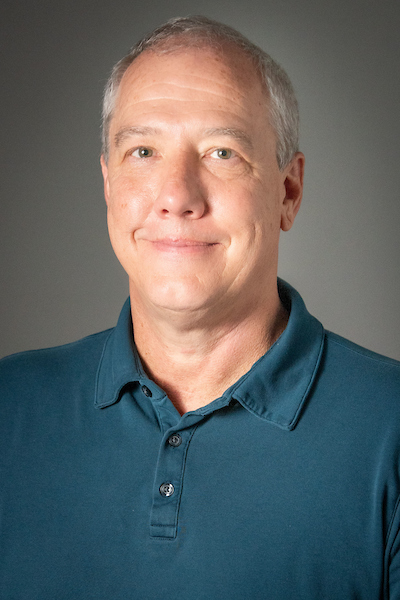
Tell us about yourself and what first interested you in your chosen field of research?
My name is Lee Williams. I graduated from UTHSC in 1994 with a Bachelor of Science in Occupational Therapy. I received my doctorate from Quinnipiac University in 2017. During my 25+ years of clinical practice I have been fascinated by the evolution of evidence-based practice related to stroke. Despite the prevalence of stroke there is little solid evidence regarding best practice for management of symptoms. There is also a lack of research into intervention efficacy. My goal as a researcher is to attempt to fill this gap with solid evidence supporting best practice.
Is there a recent research project have you been working on that you’d like to share with us?
I am currently involved in an AOTF (American Occupational Therapy Foundation) supported study examining the access to and effectiveness of occupational therapy in home health stroke rehab in Tennessee Medicaid patients. We are looking at SDOH as well as differences in treatment provided in rural versus urban areas.
My role in this study has included providing background information on practice interventions used, identifying ICD-10 codes for the study, selecting relevant CPT codes indicating OT involvement in the POC of clients, performing literature review and drafting a preliminary scoping review of the topic.
What would you like the public to know about your research and why it is important?
It is vital that we identify intervention strategies that result in the best outcomes for our clients. As the number of older adults continues to increase, there is increased burden on the healthcare system to maximize benefit to clients to reduce long term illness and disability. Payors need to understand which services are most efficacious and cost effective in order to stay competitive and to reduce expense associated with stroke.
What are the most interesting or surprising findings from your work so far?
One thing I have found interesting is how little communication occurs between healthcare providers in different practice settings. Although stroke survivors often receive care in multiple clinical setting, these providers have little contact with one another resulting in duplication of services and poorer outcomes.
What do you like to do outside of the lab? Do you have any personal hobbies or interests?
I love the outdoors! I enjoy camping, travel, riding ATVs, shooting guns, and doing gardening and landscaping. I also enjoy volunteering with Habitat for Humanity and the Memphis Union Mission.
